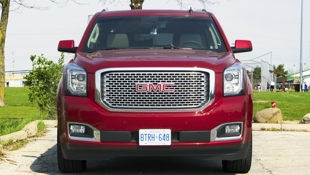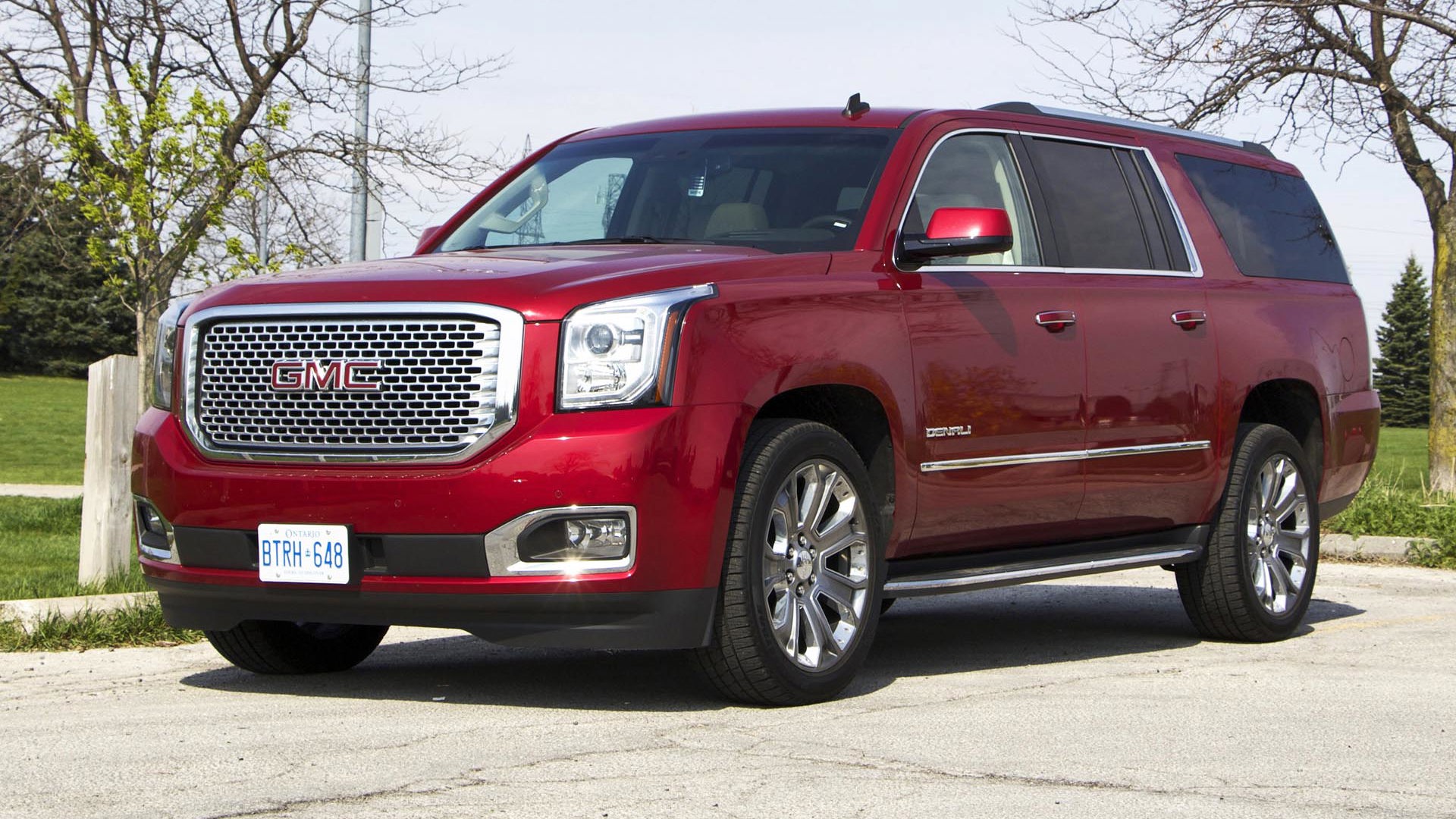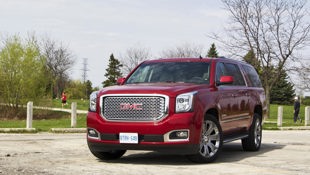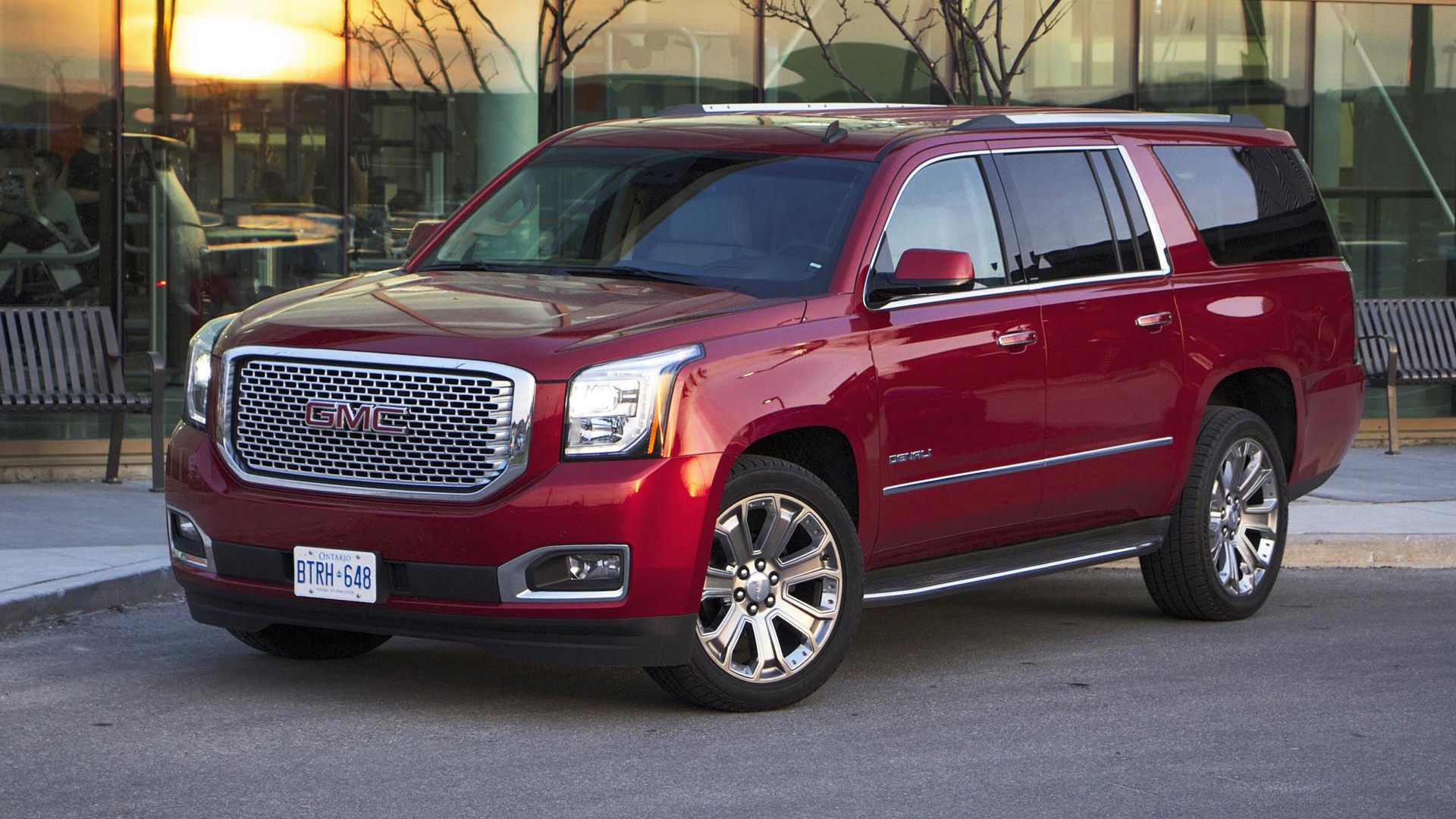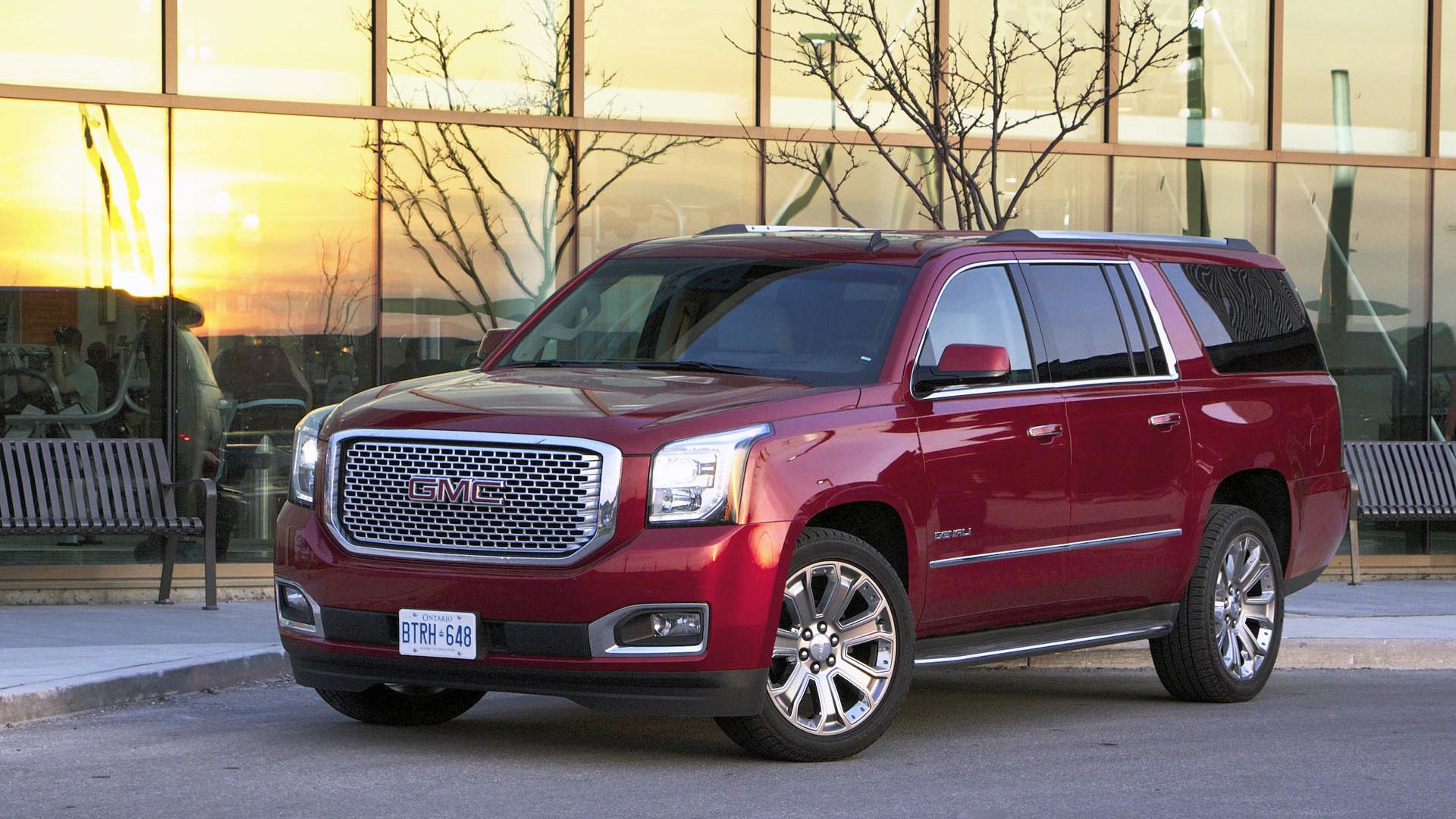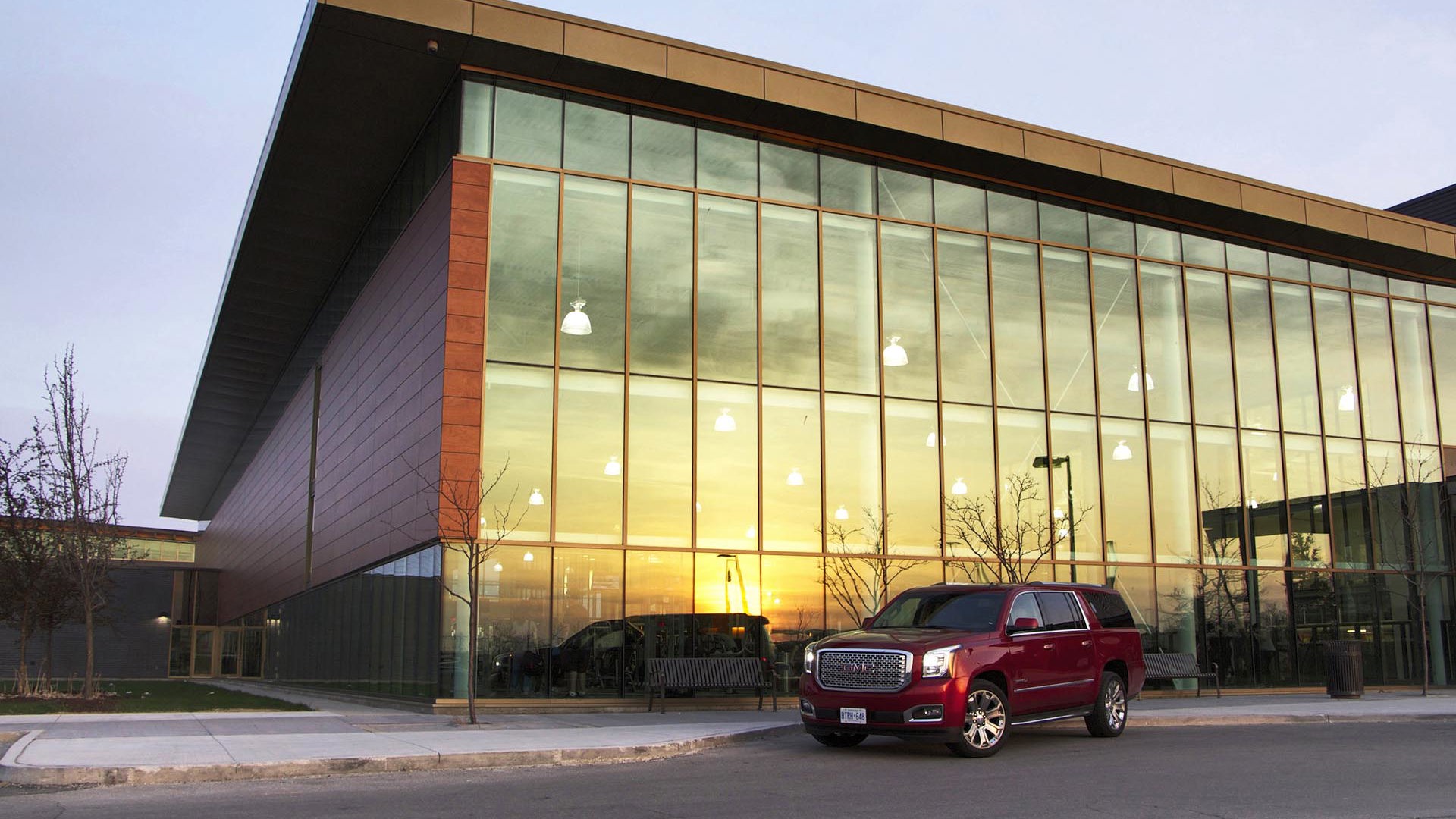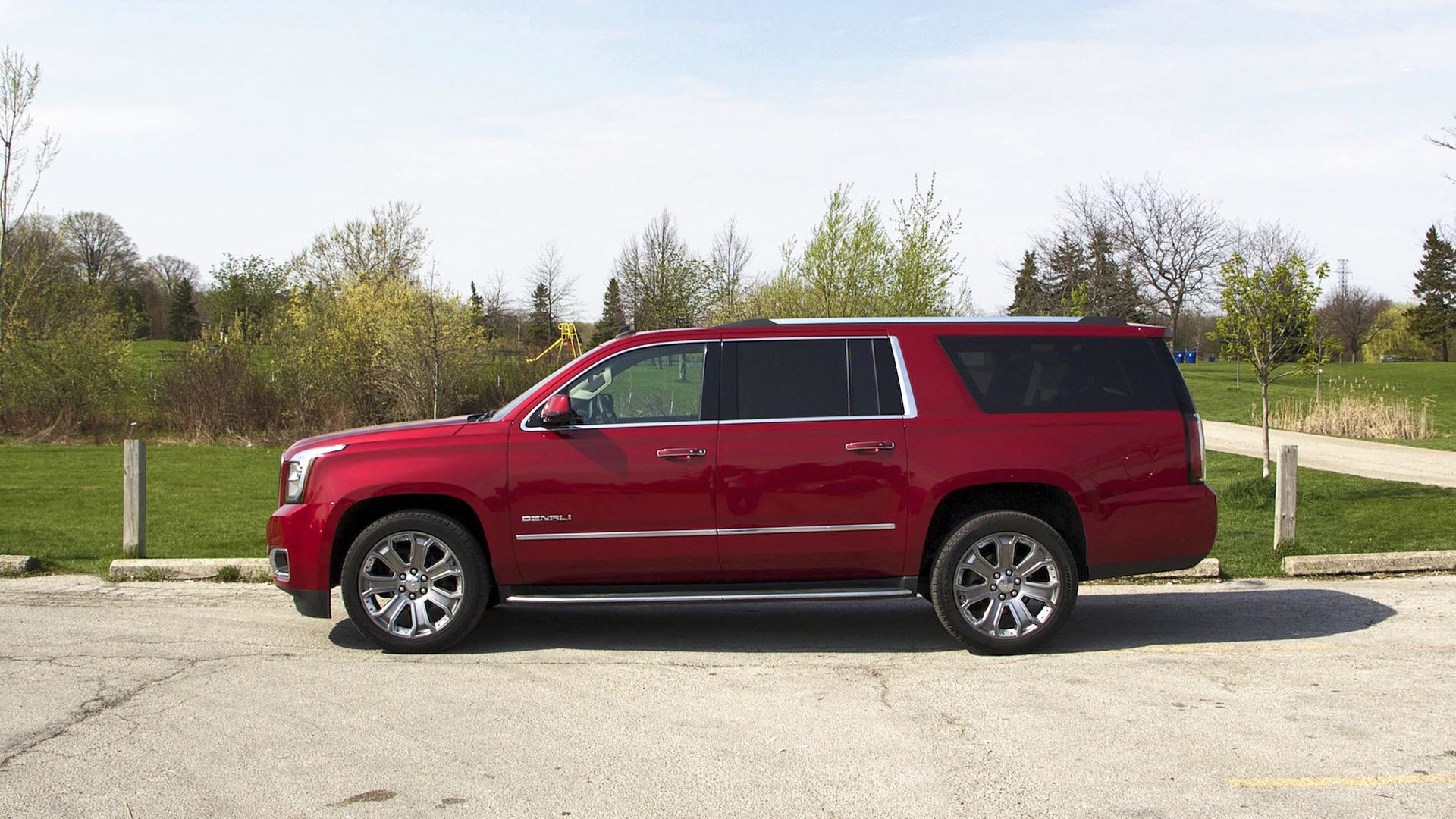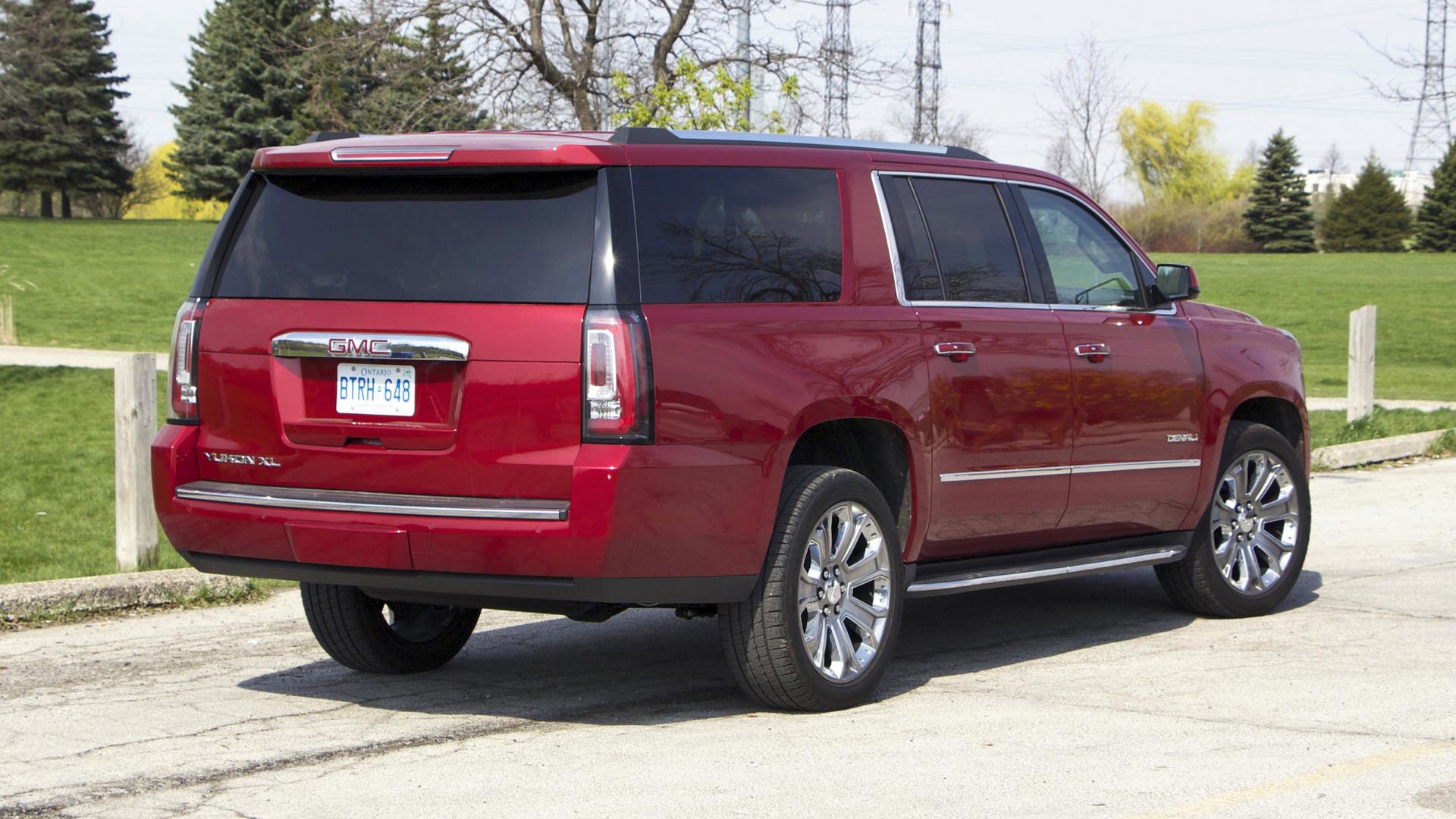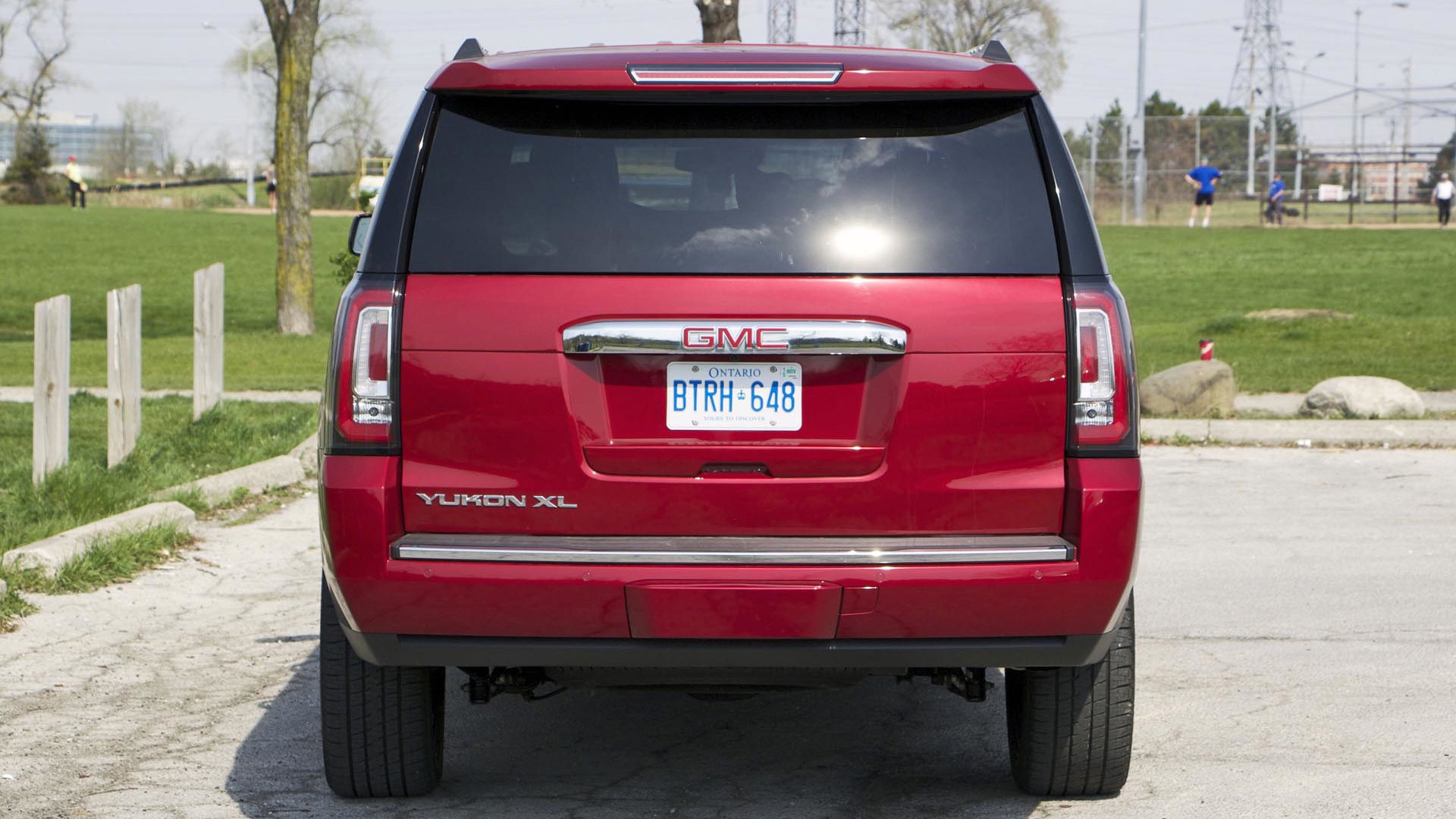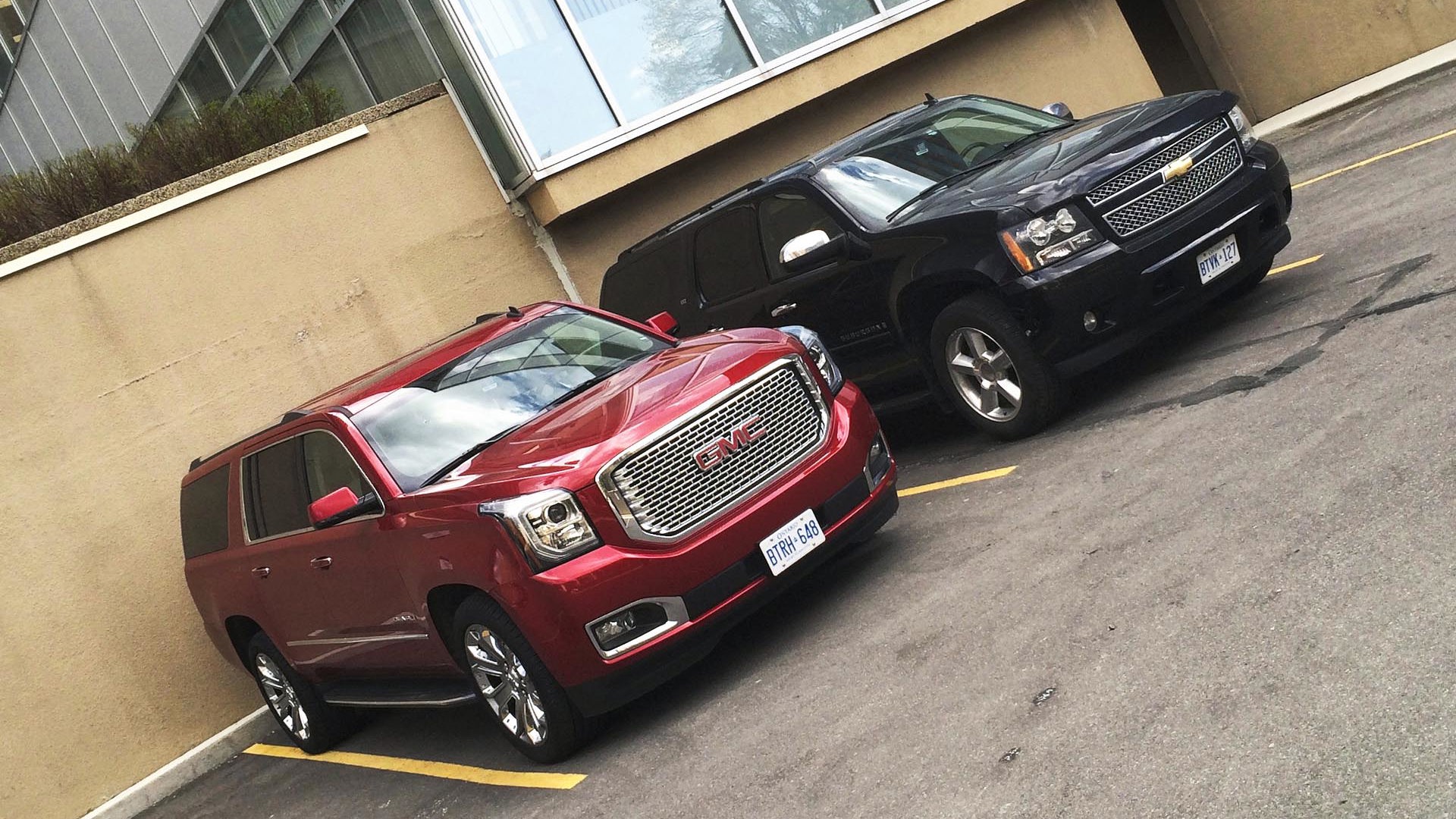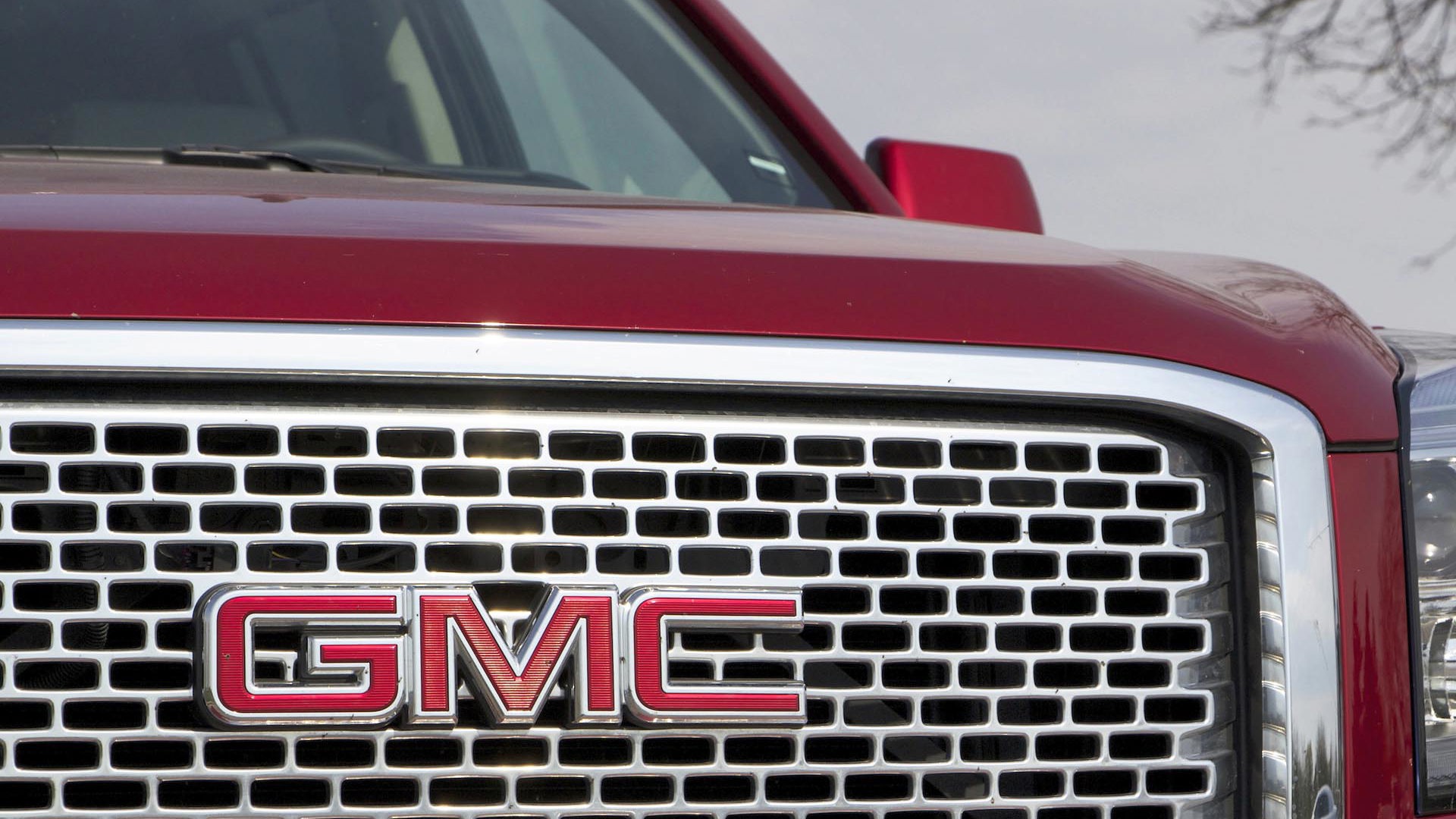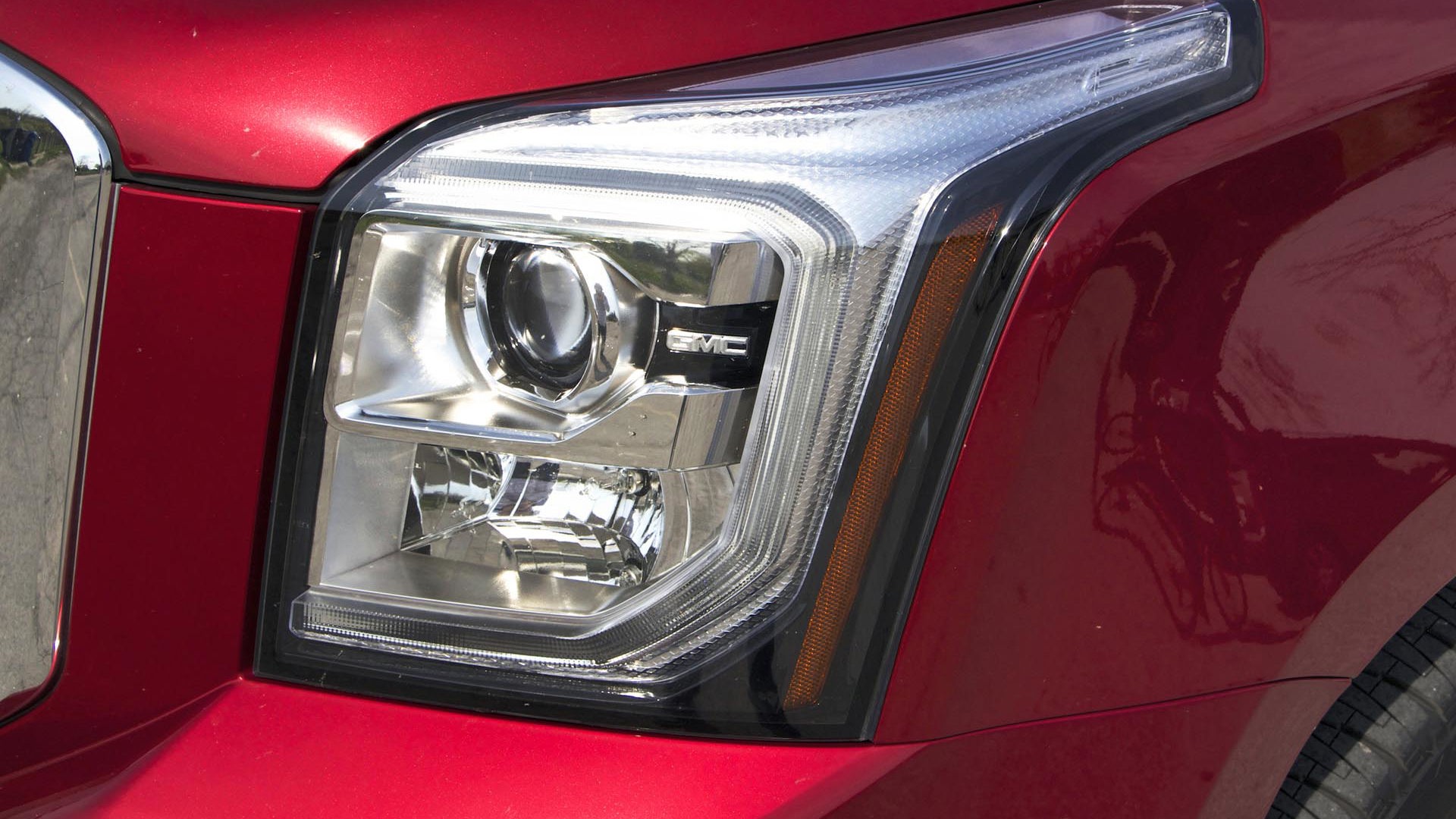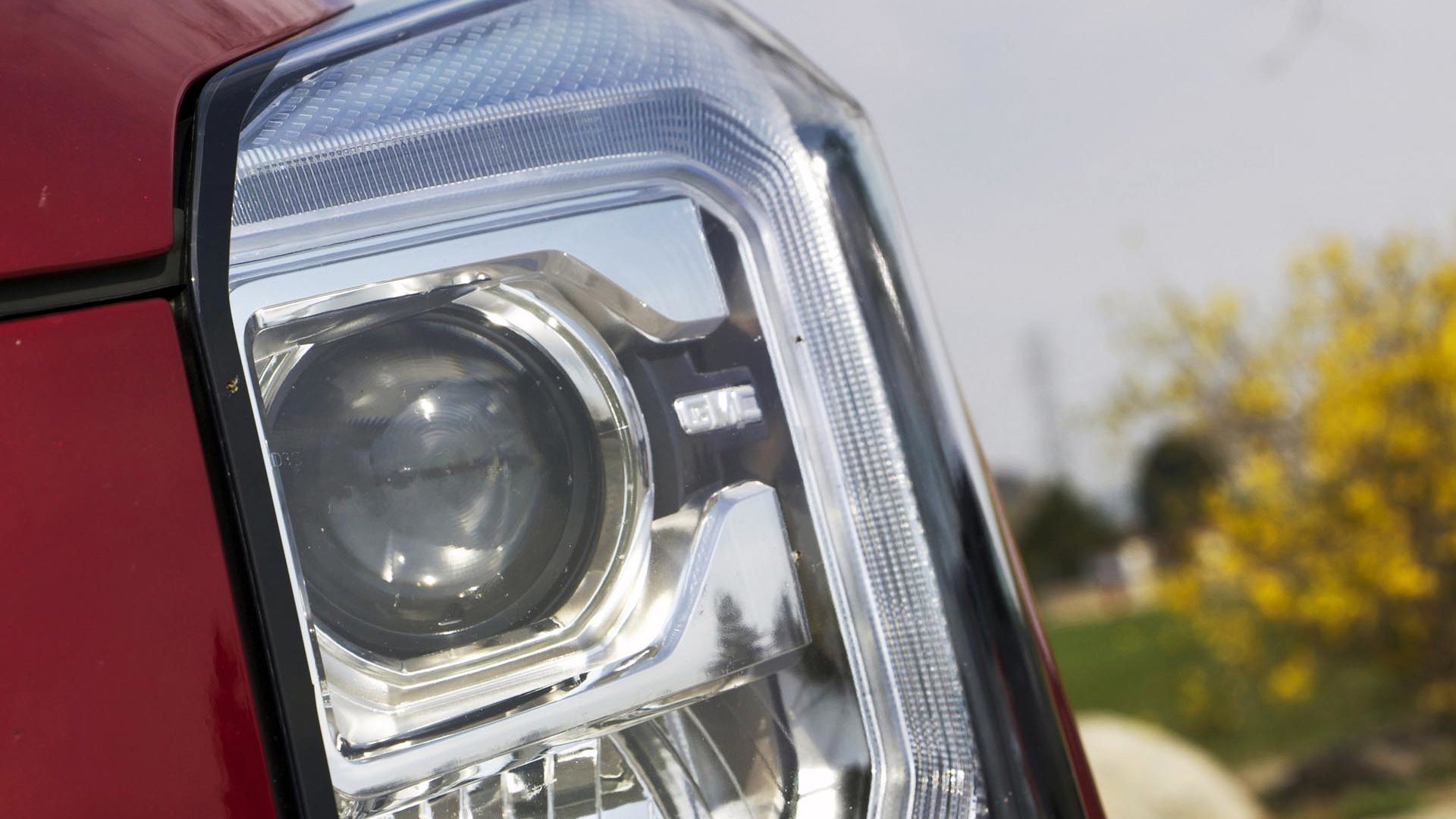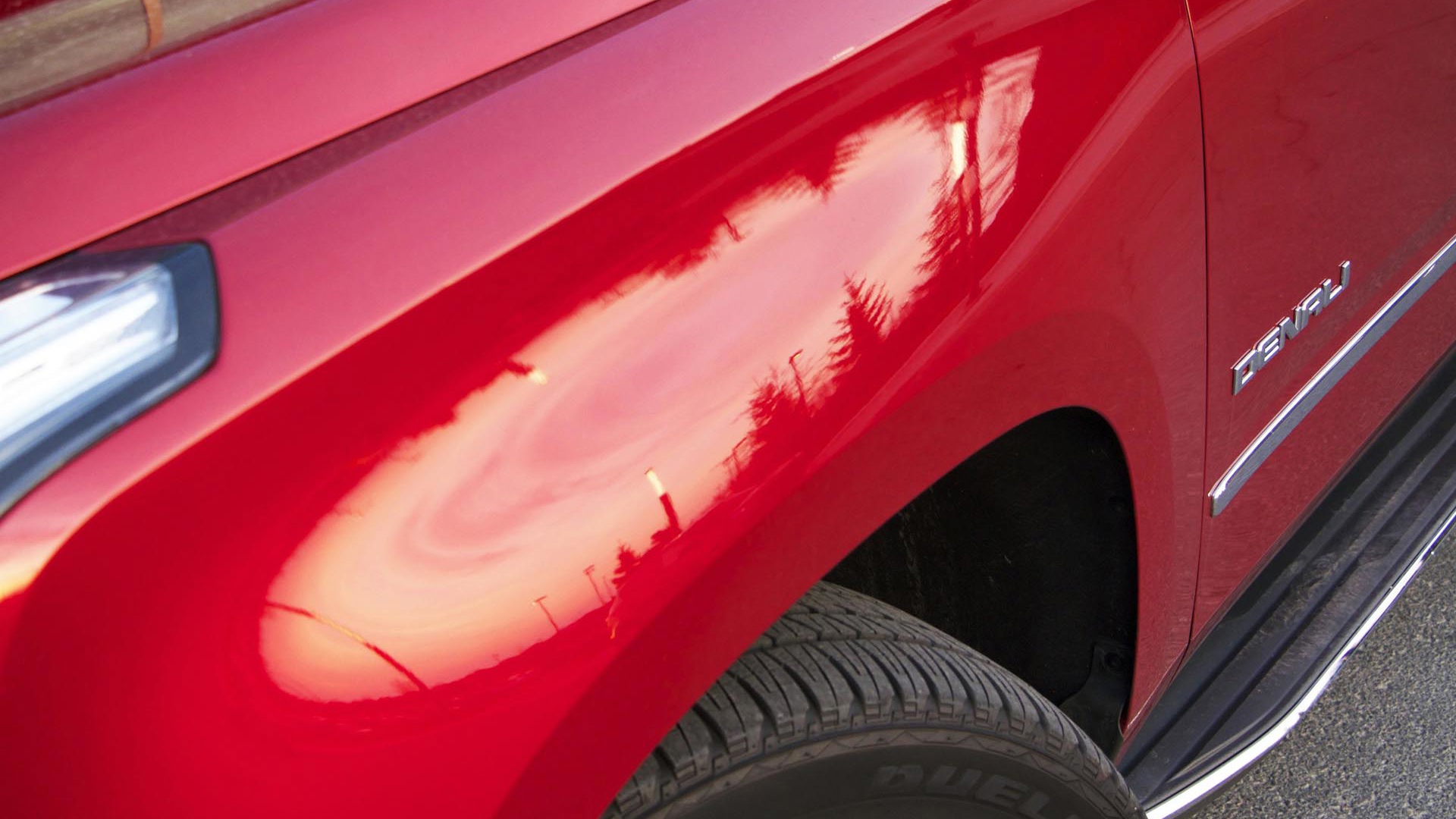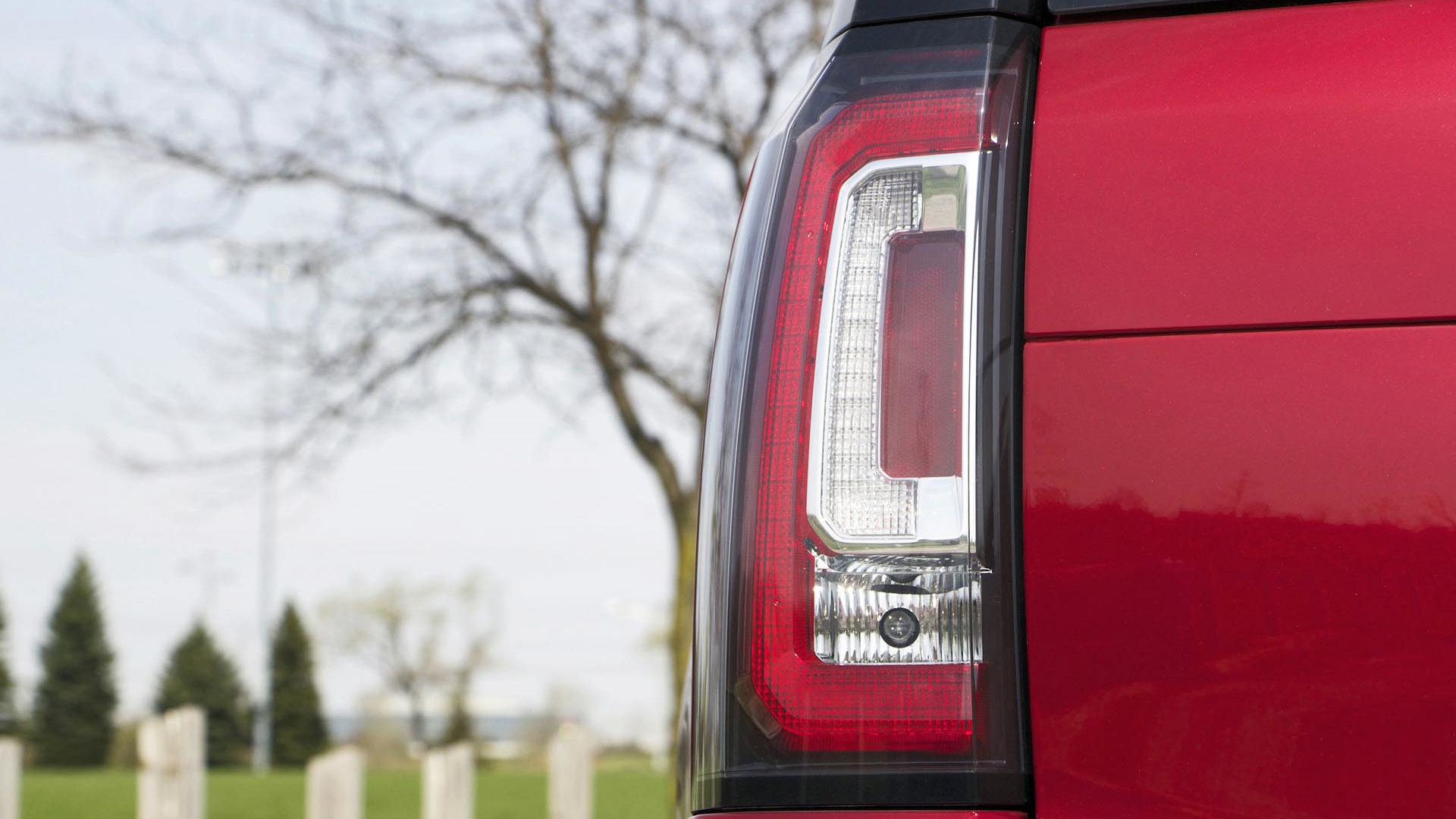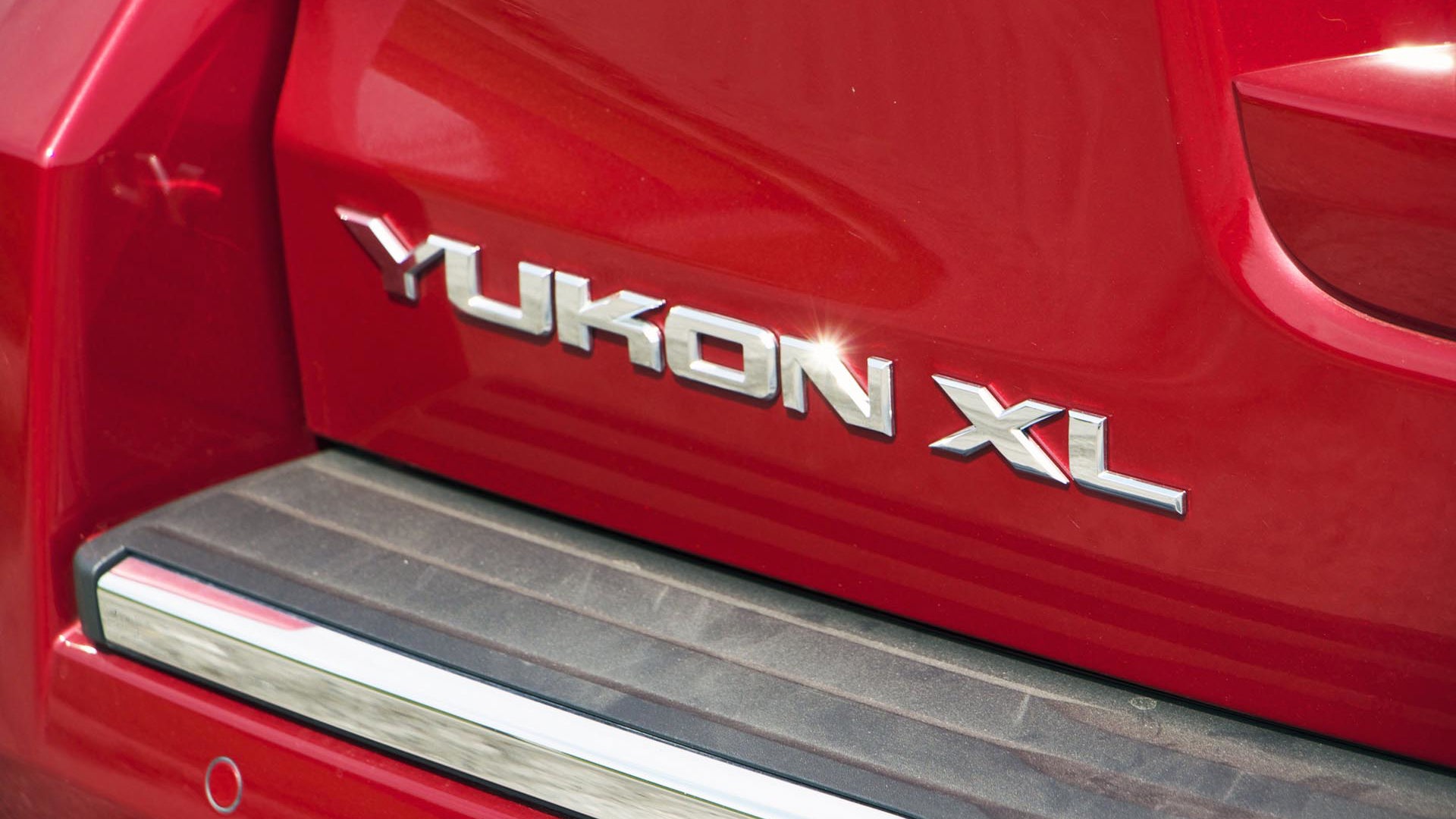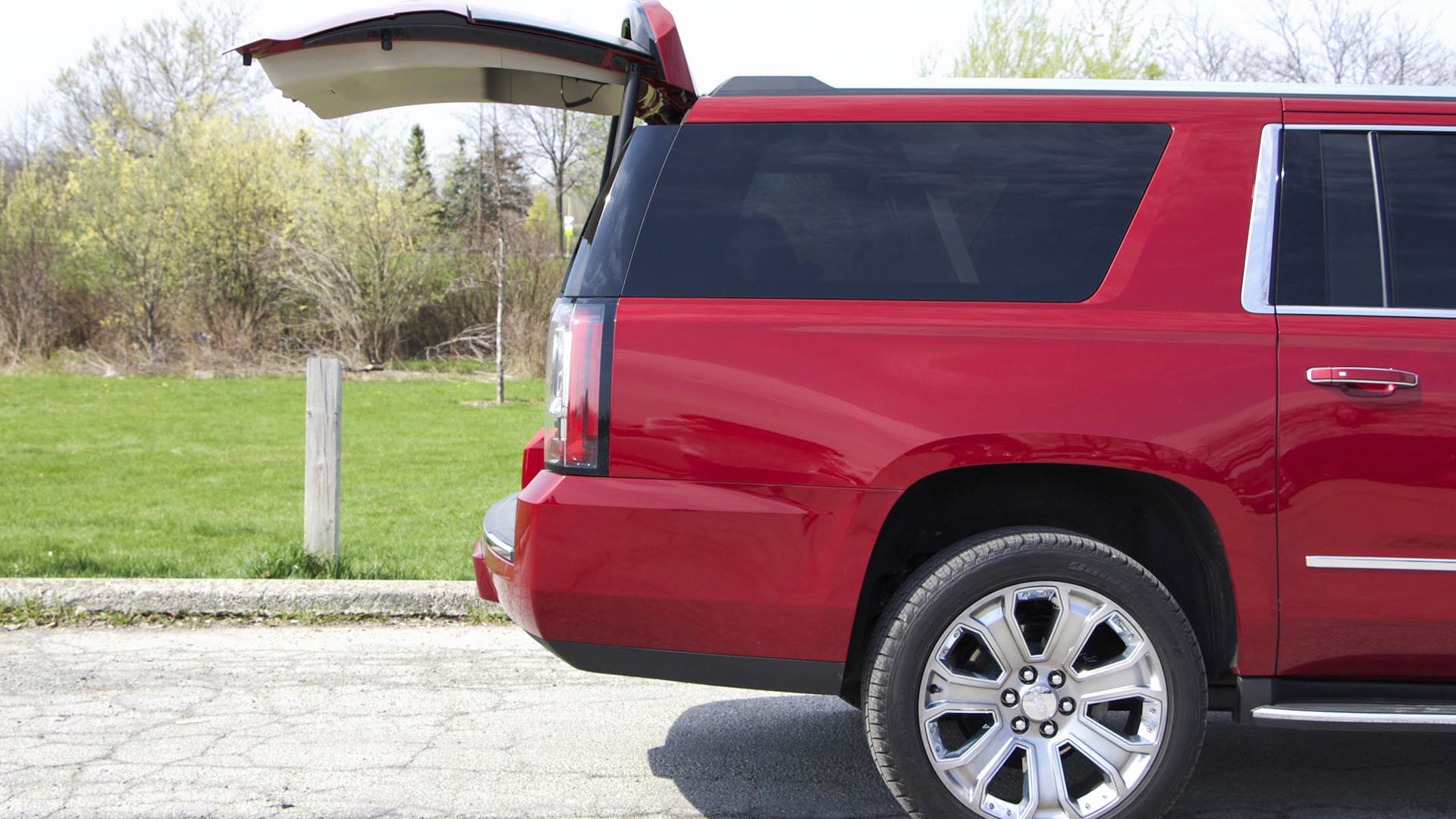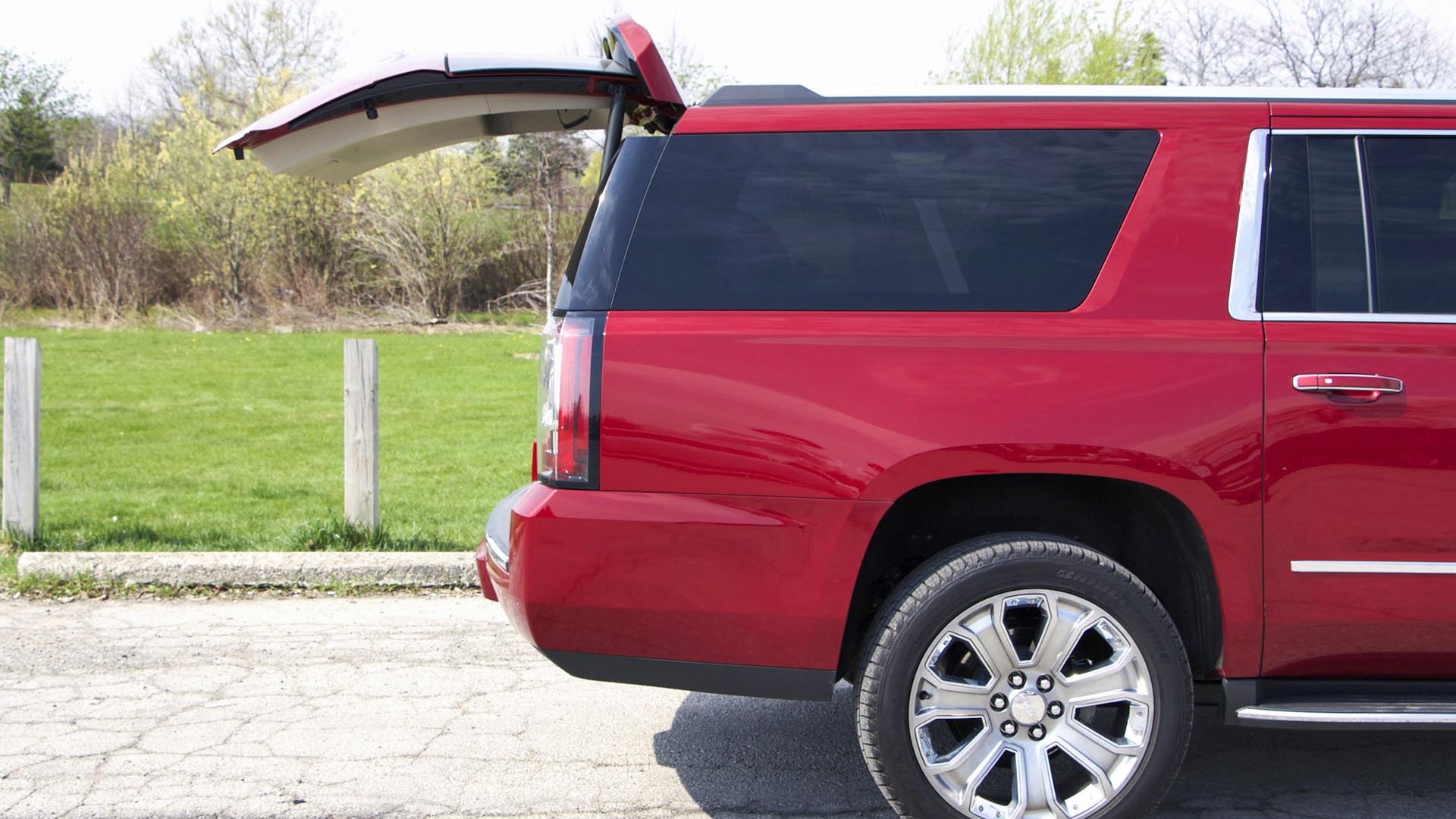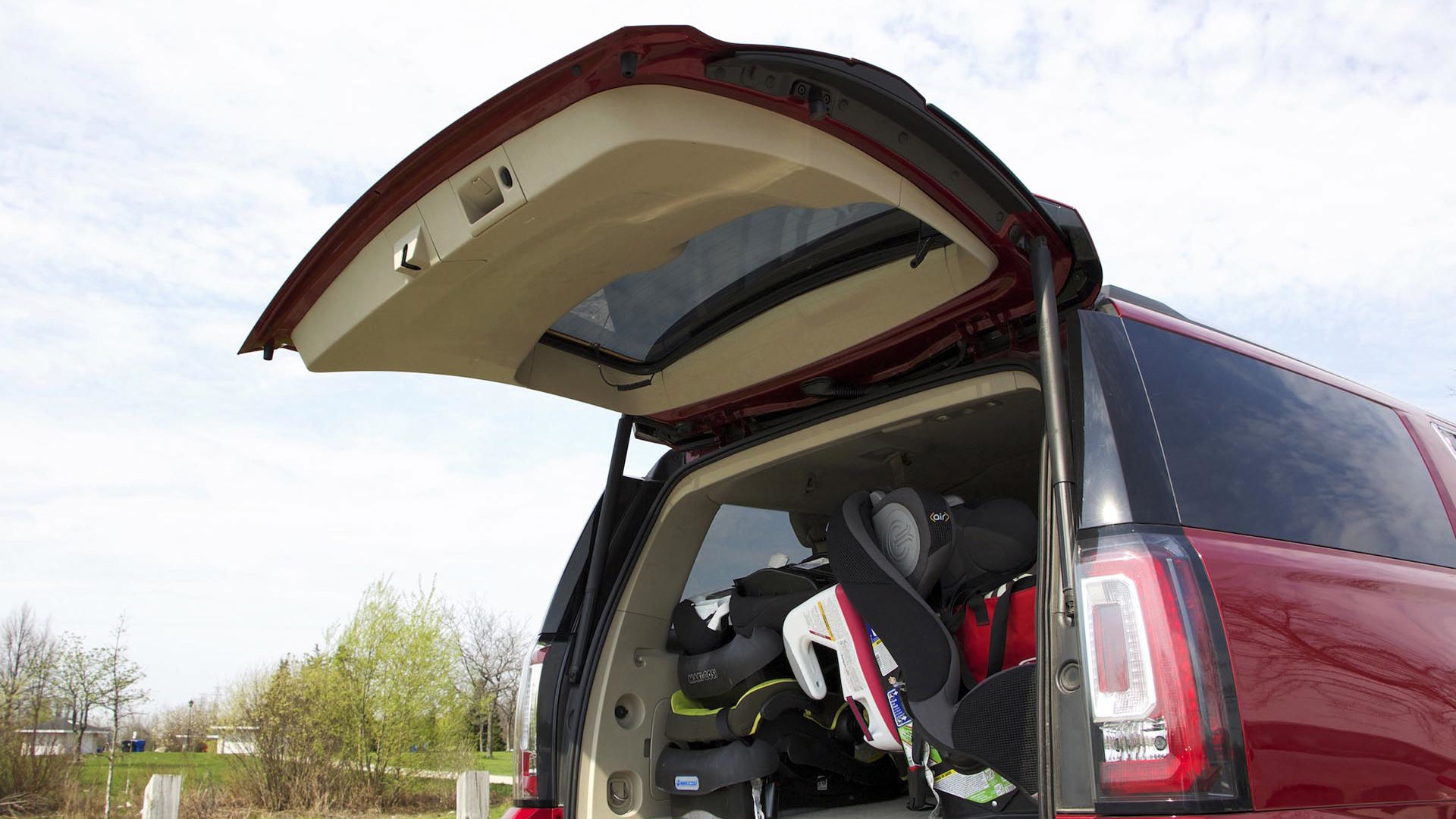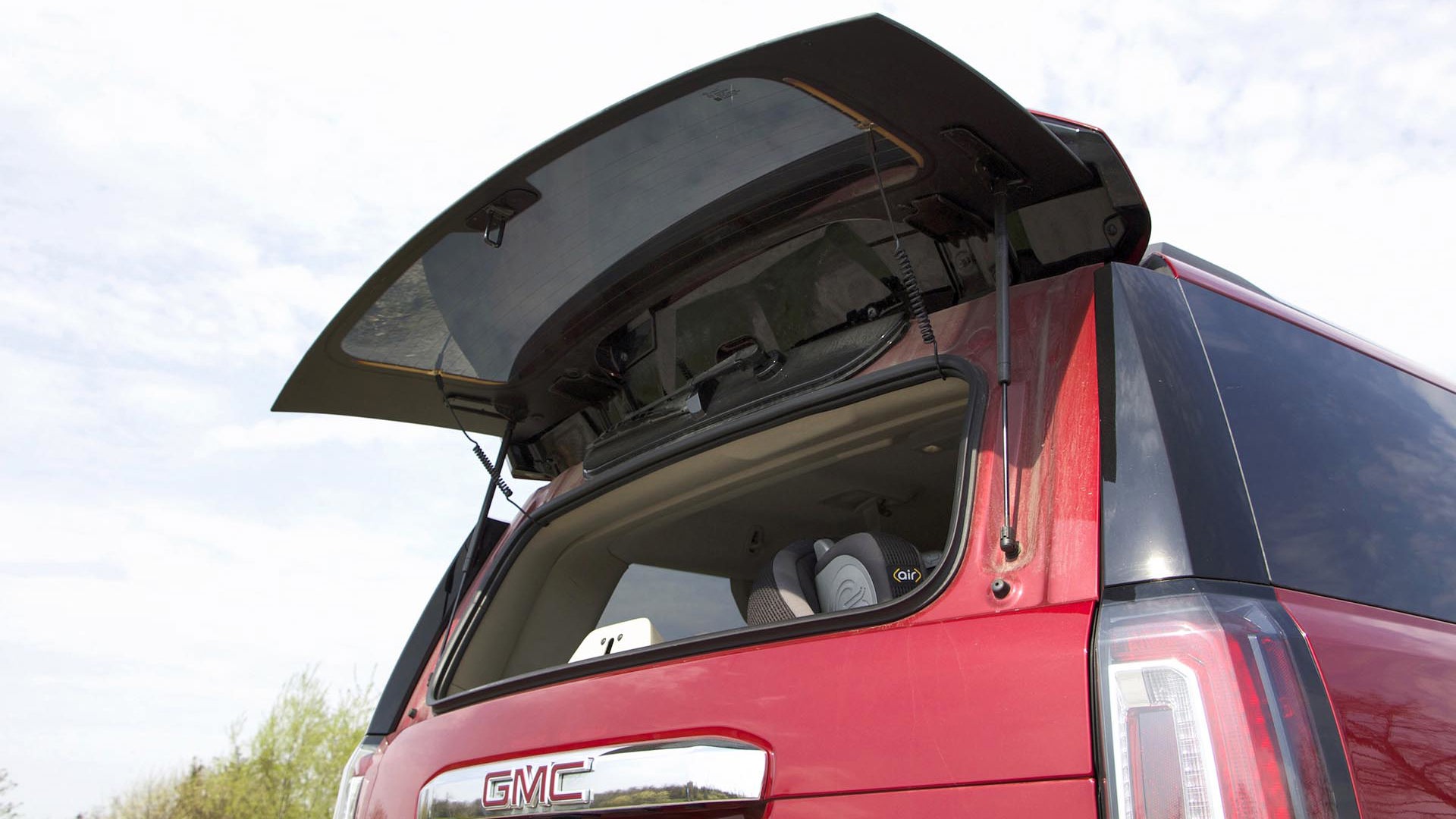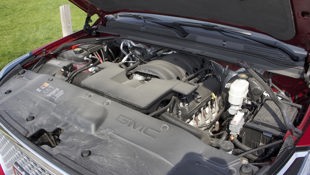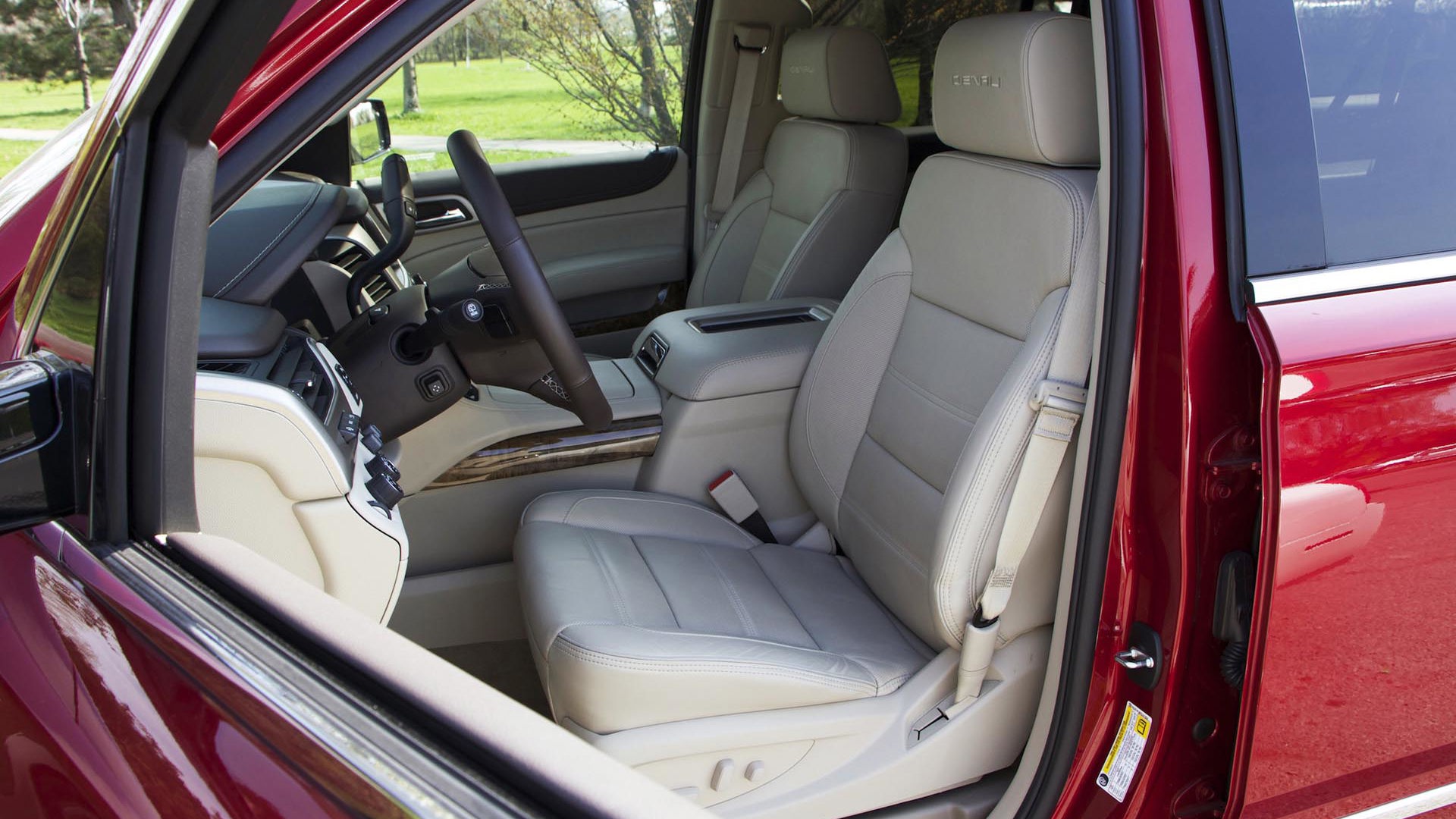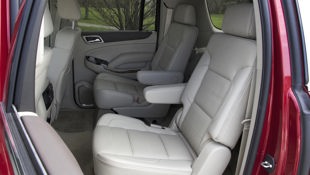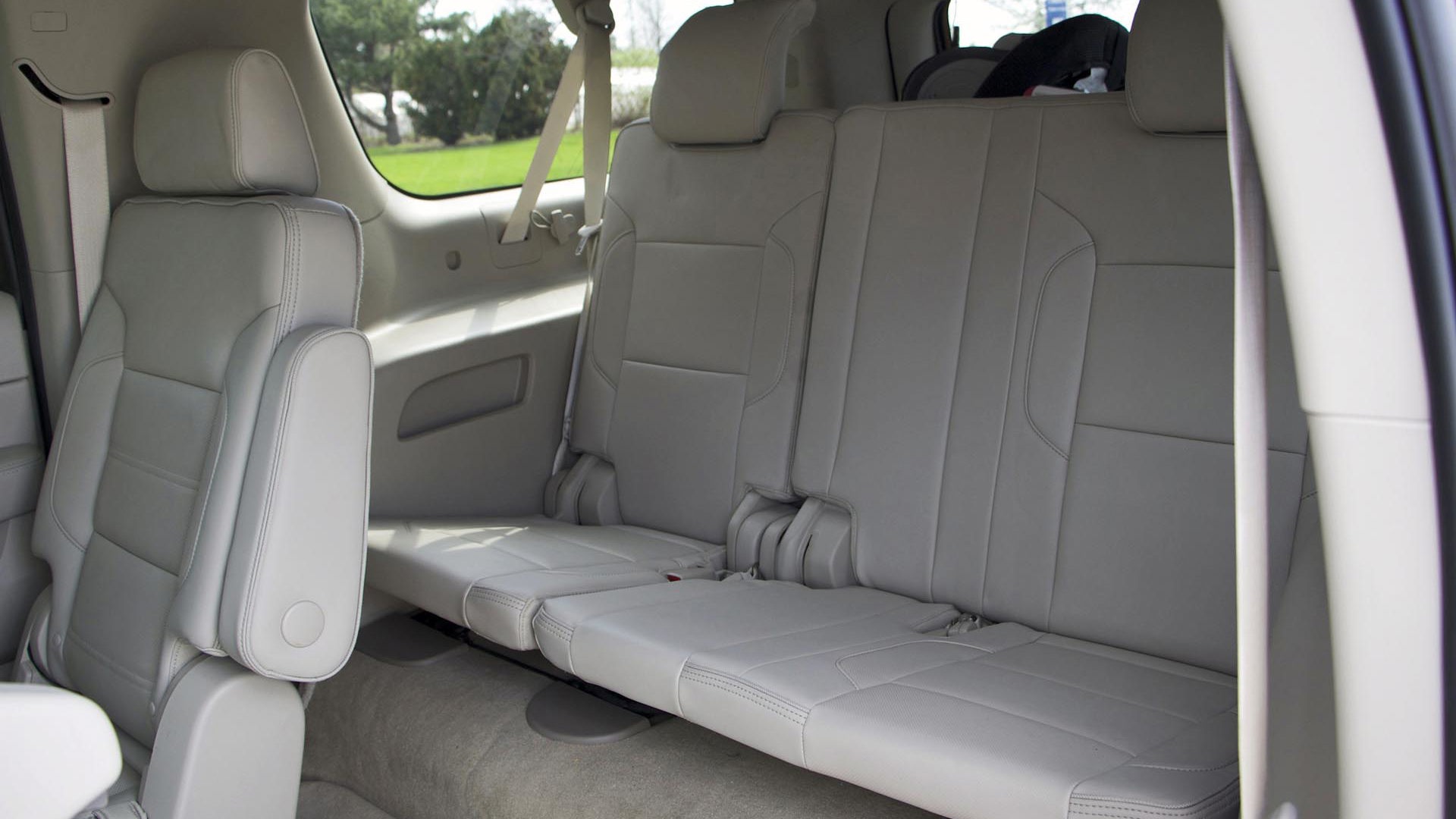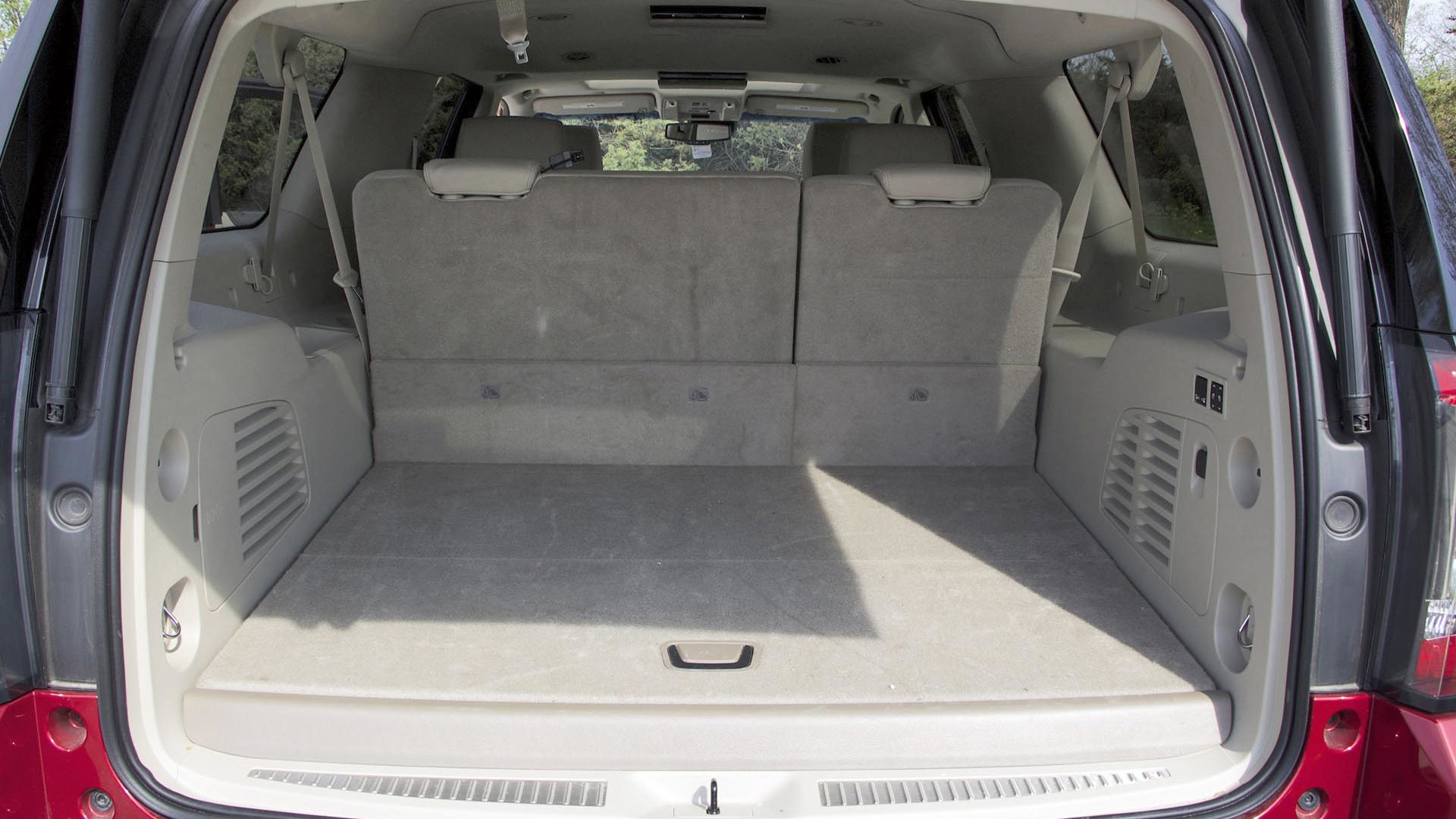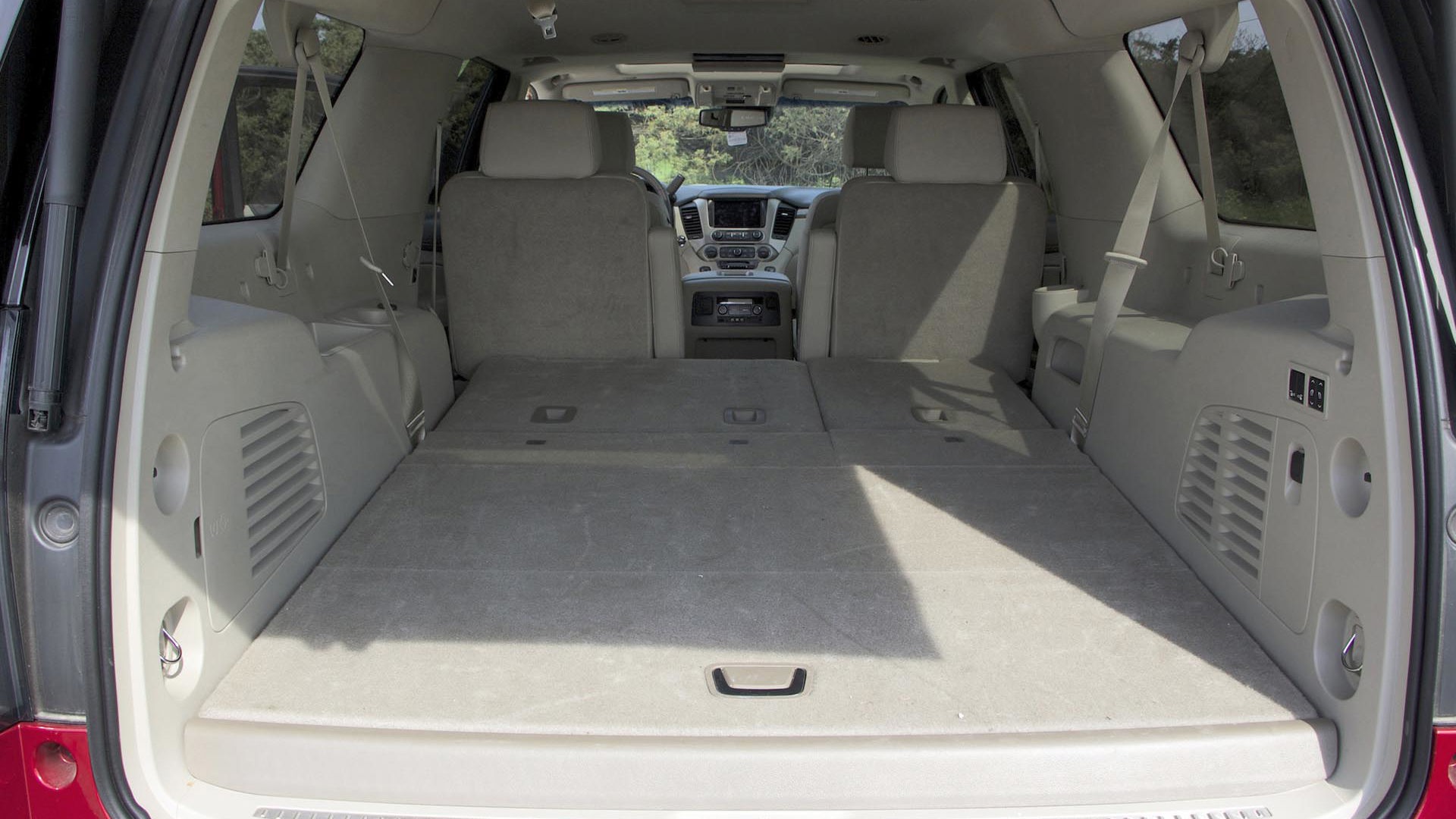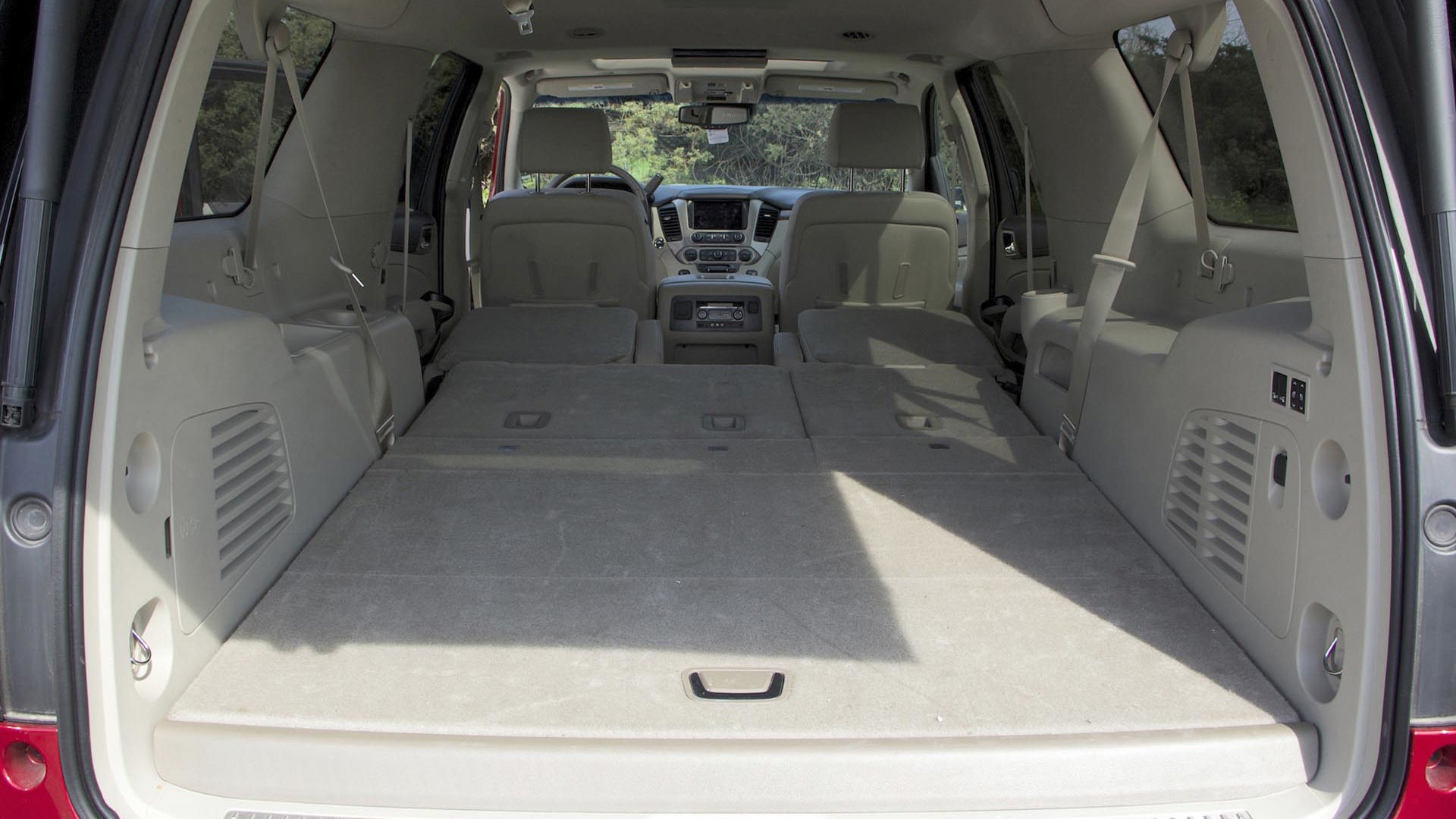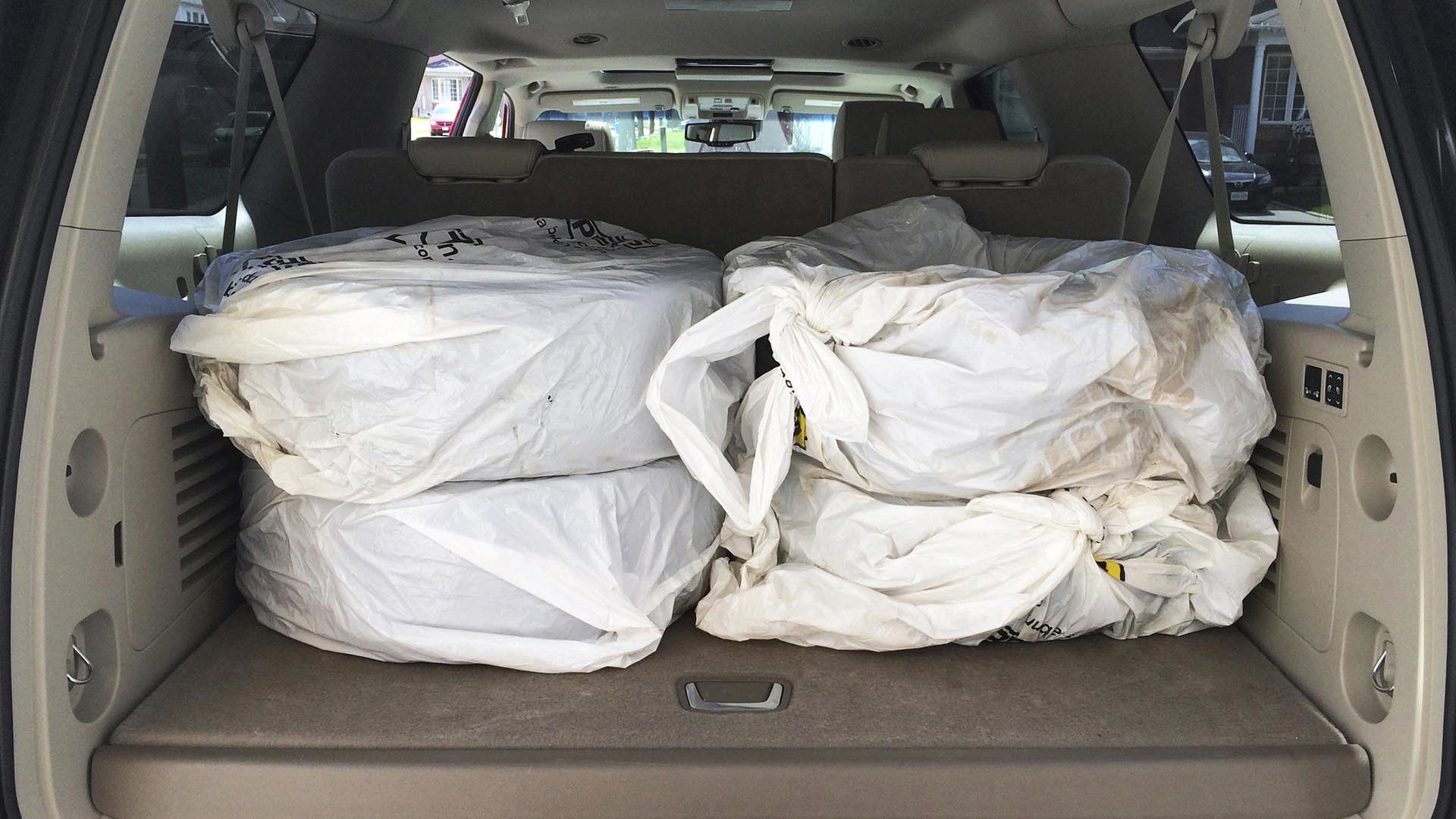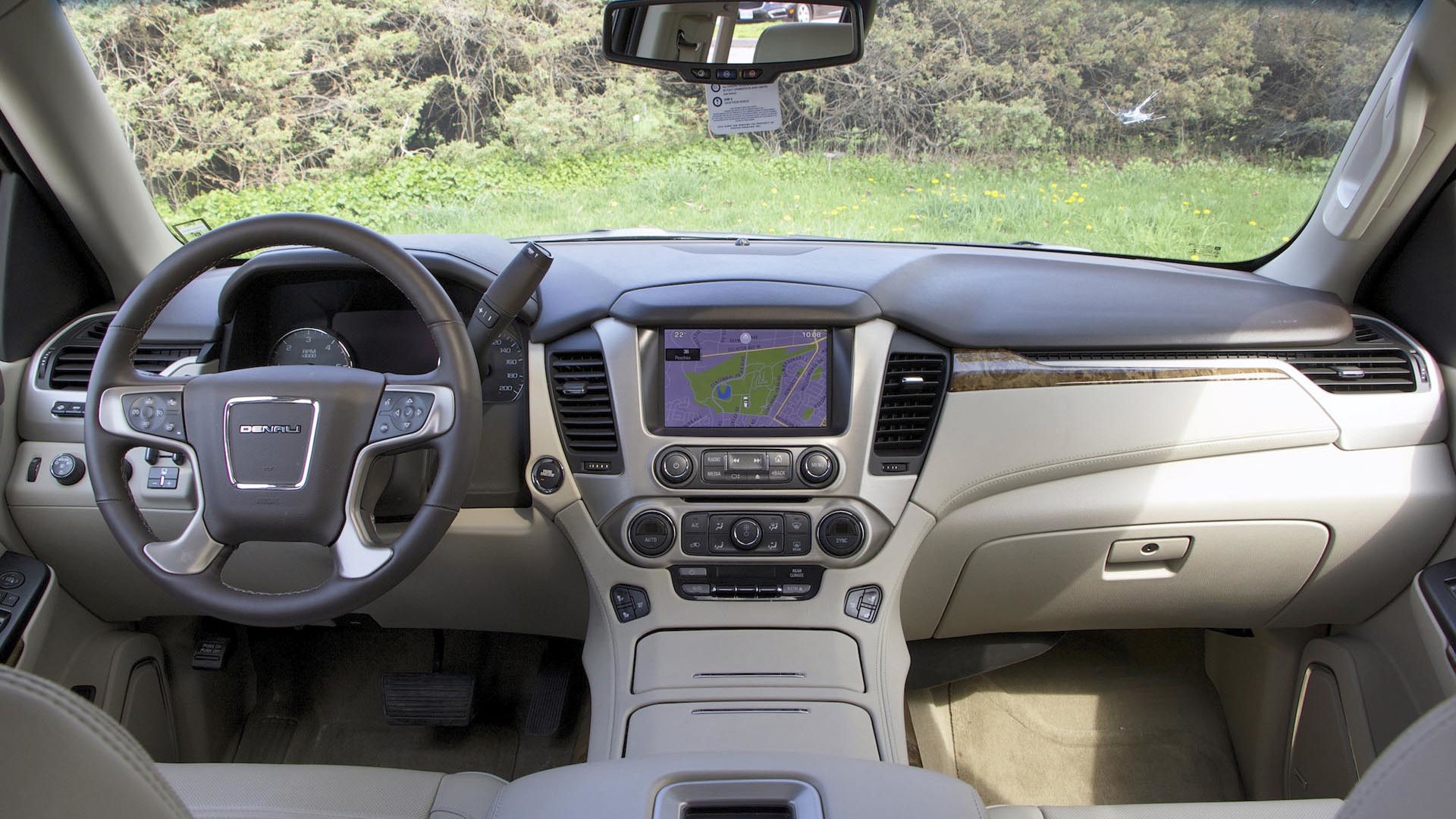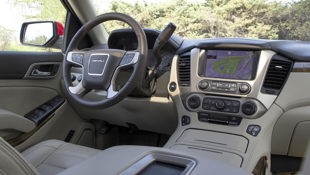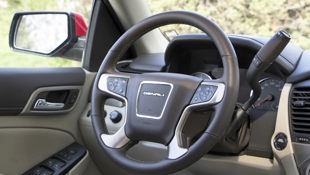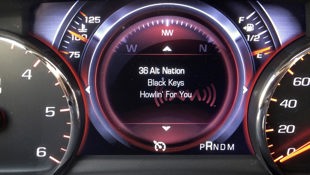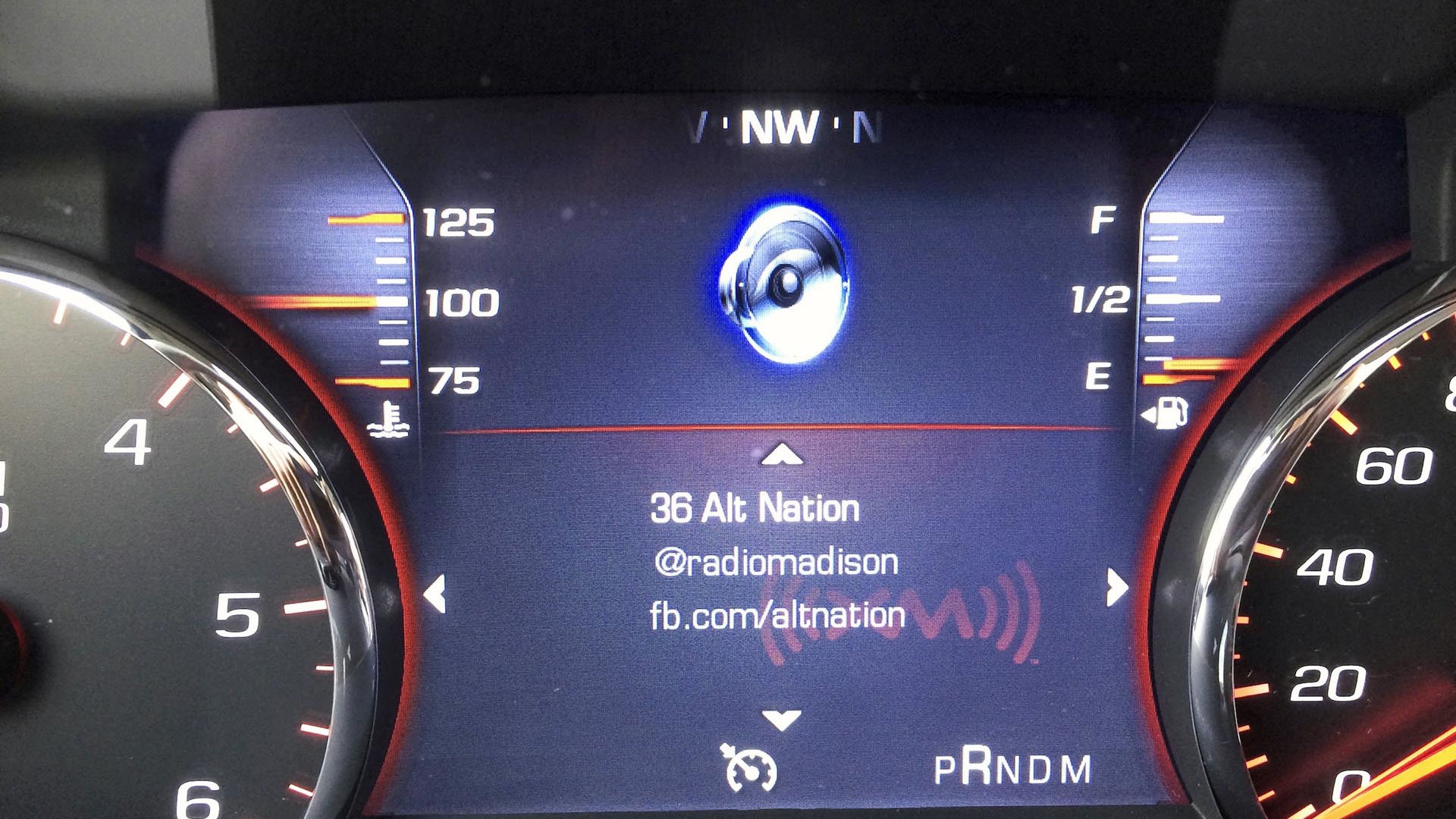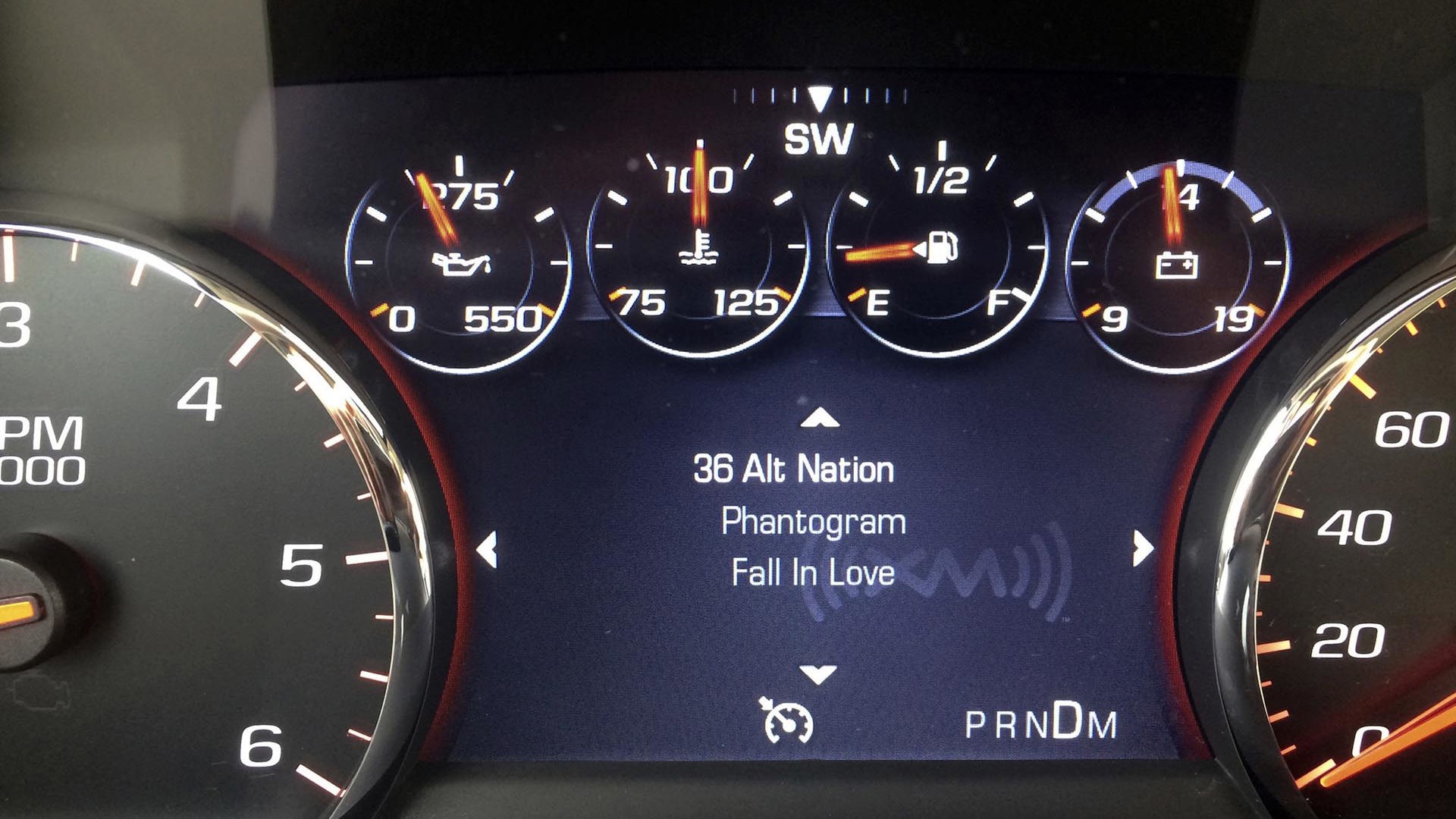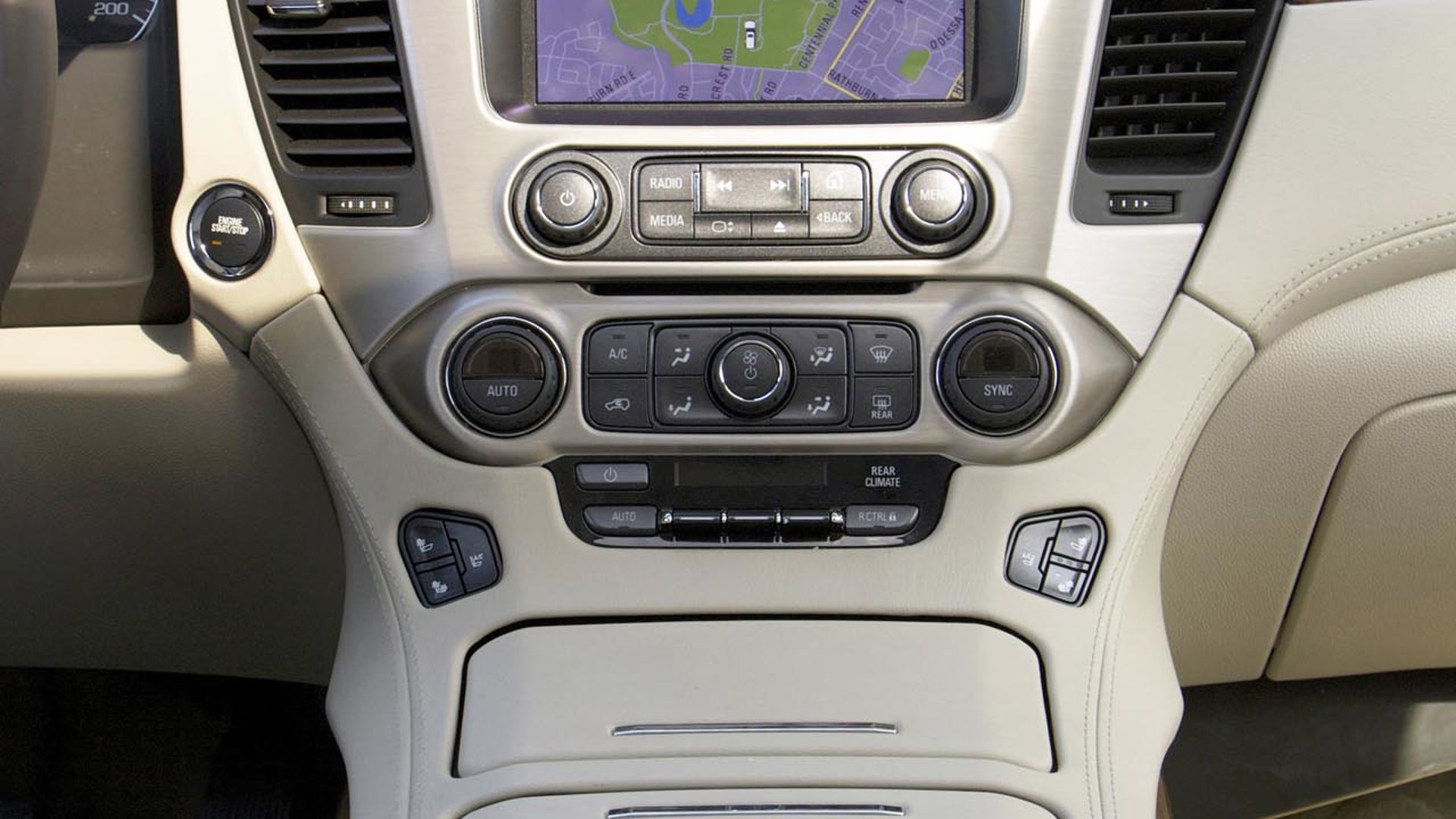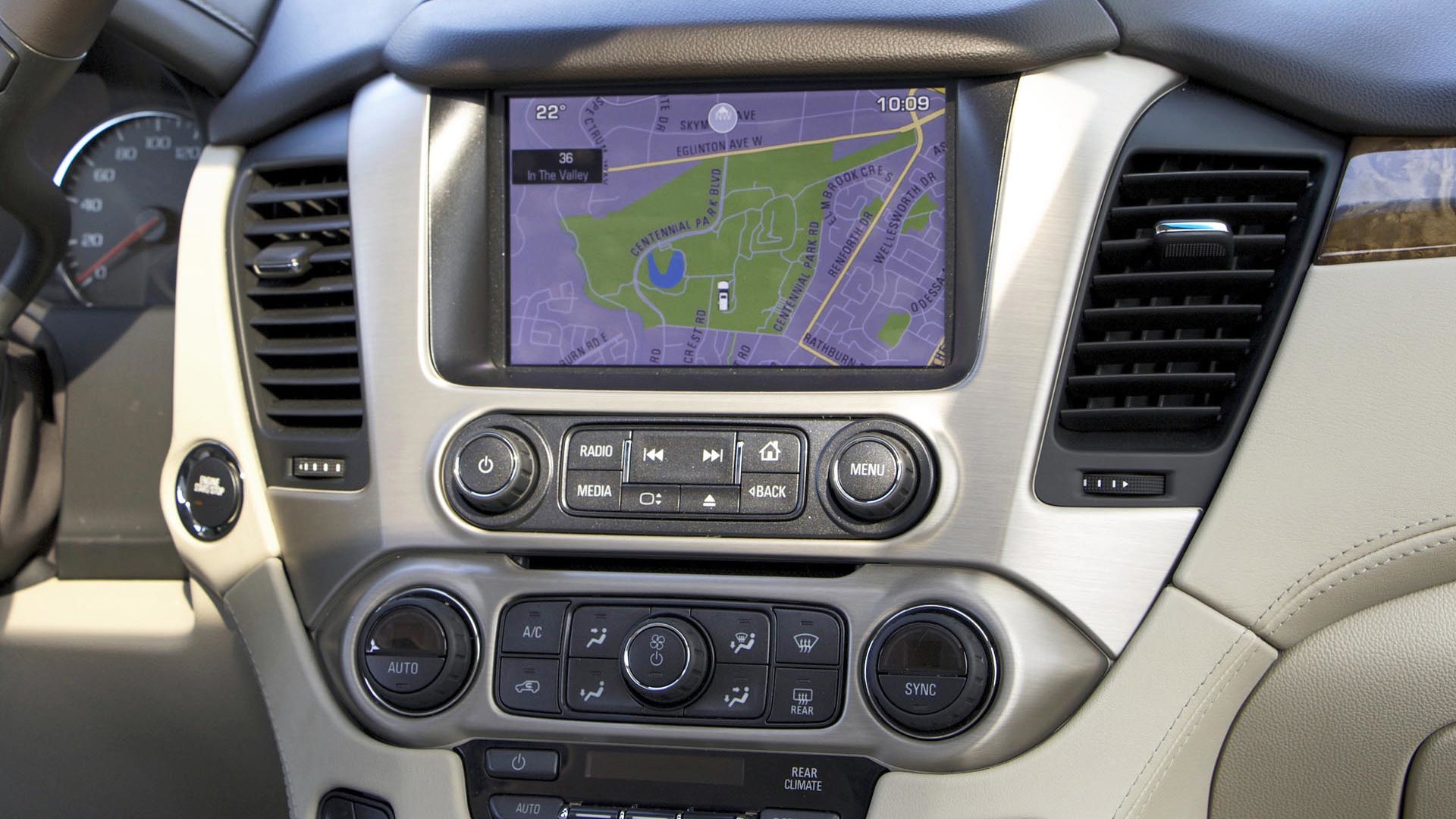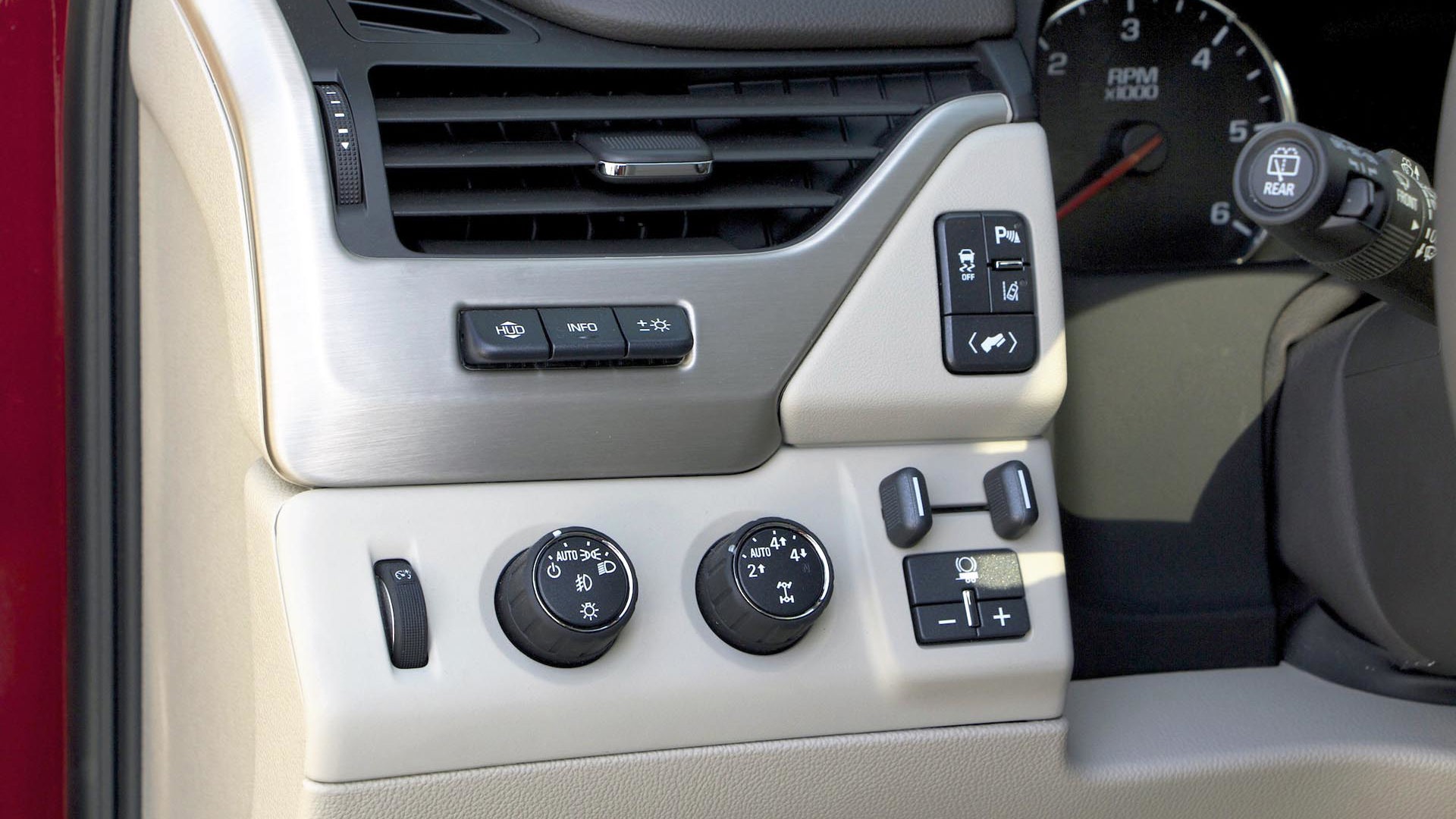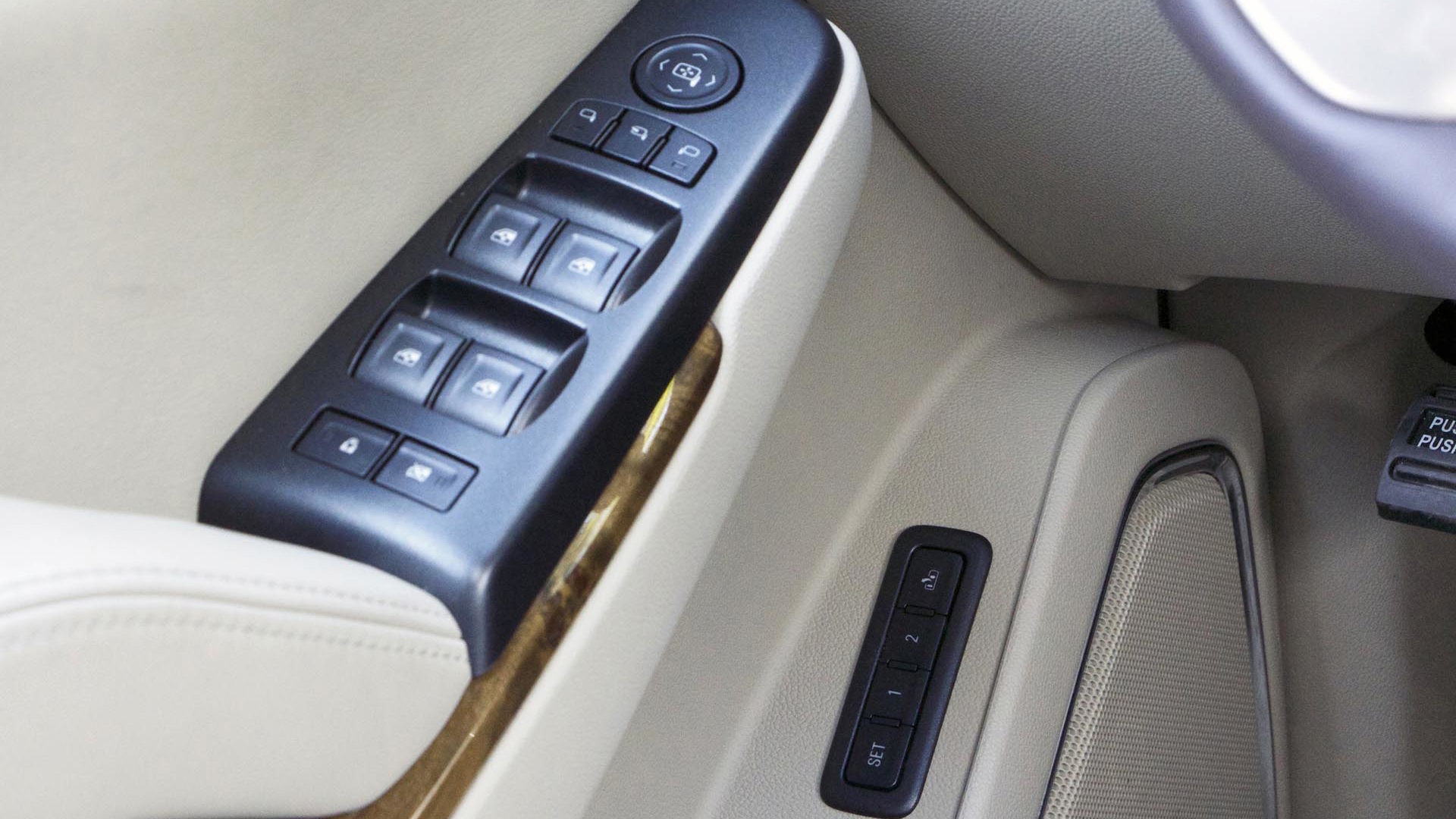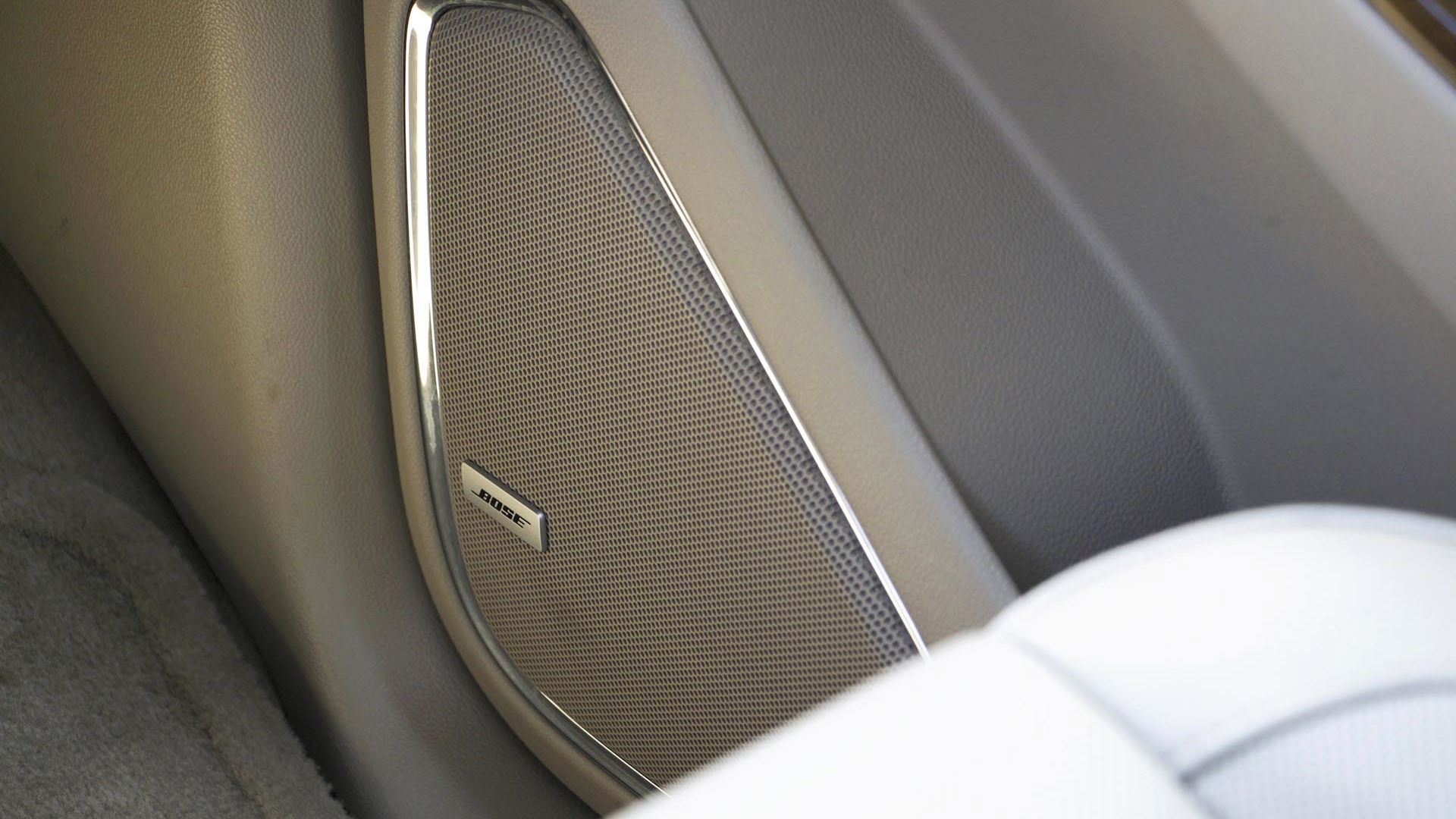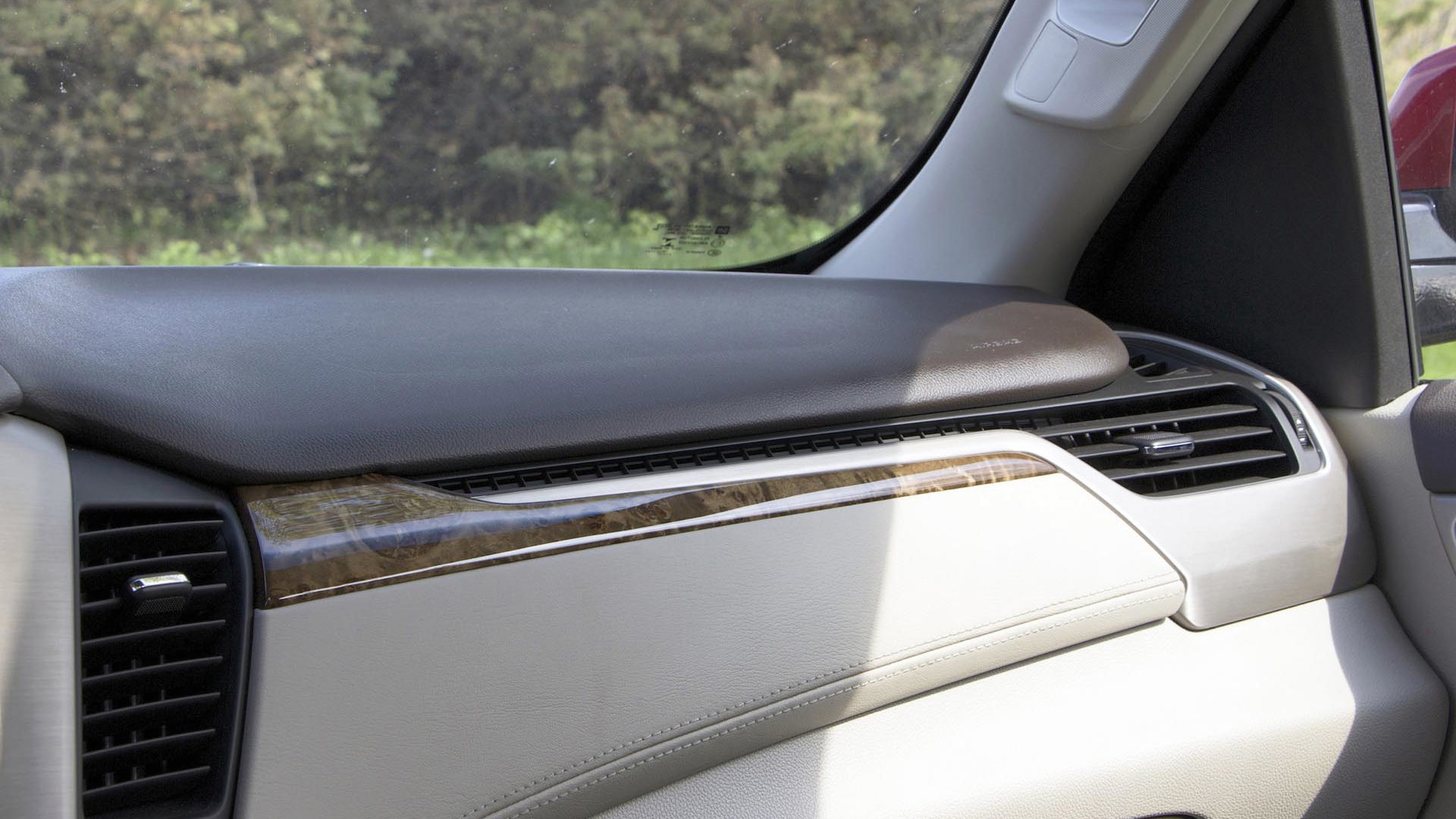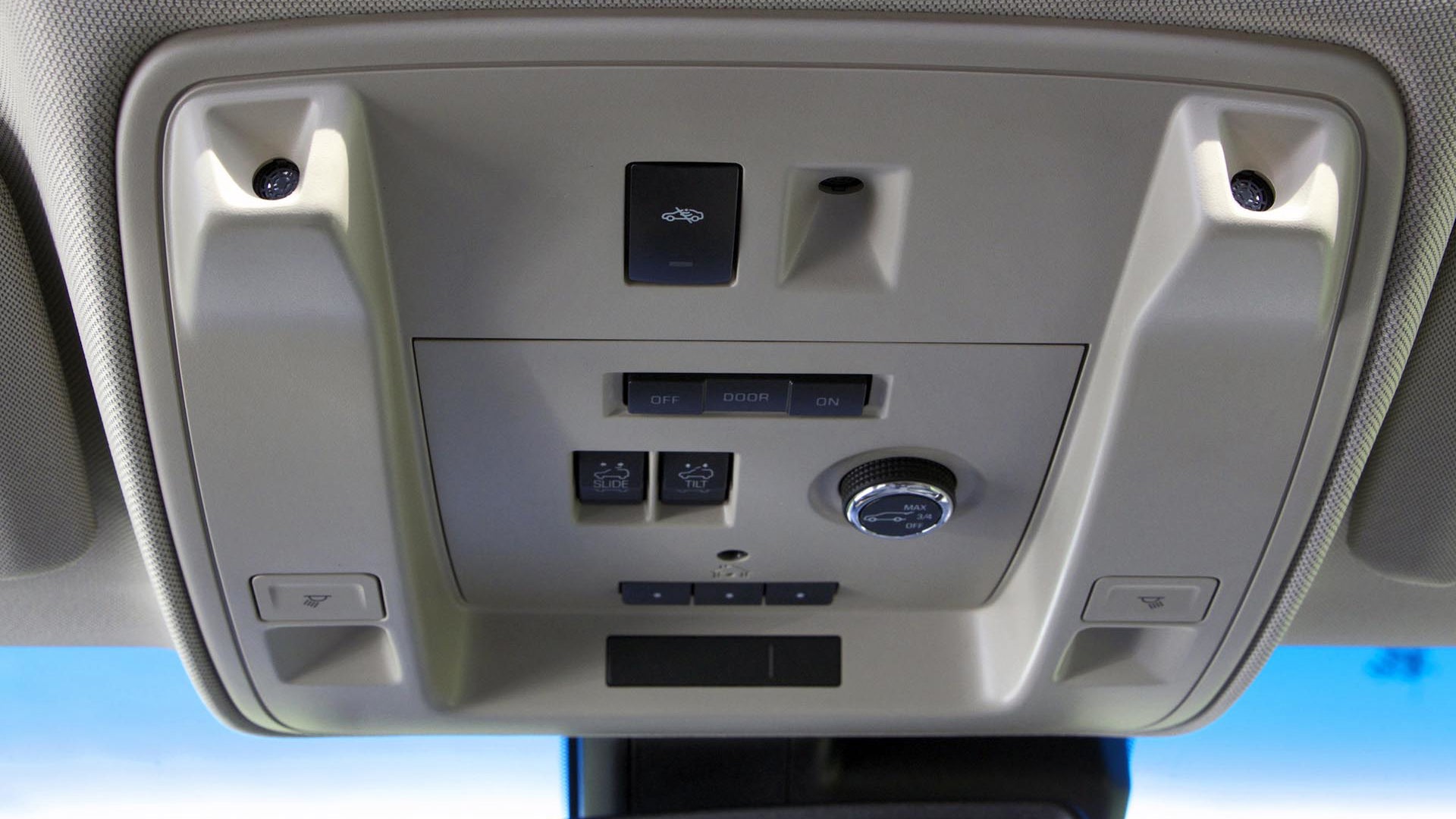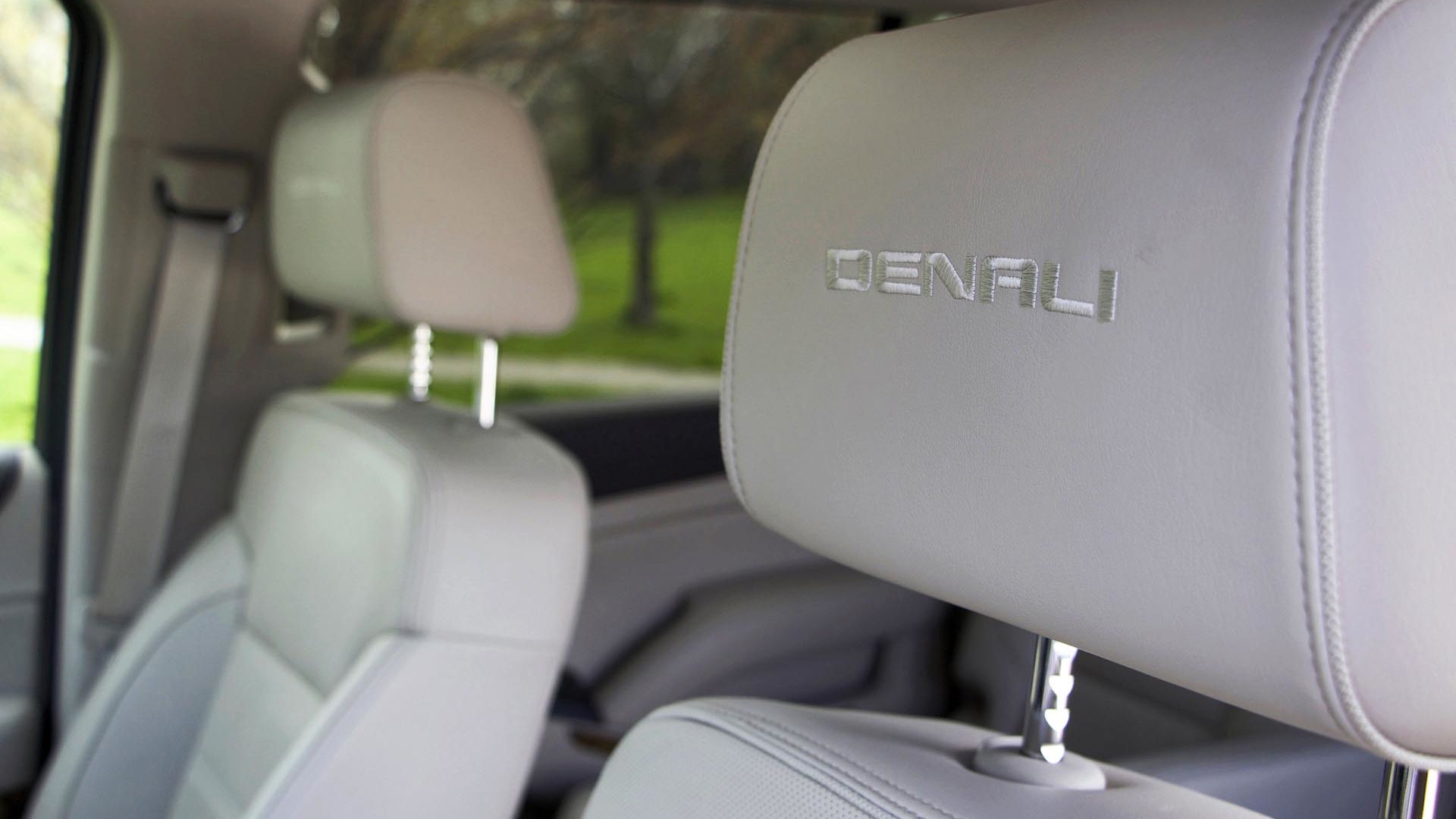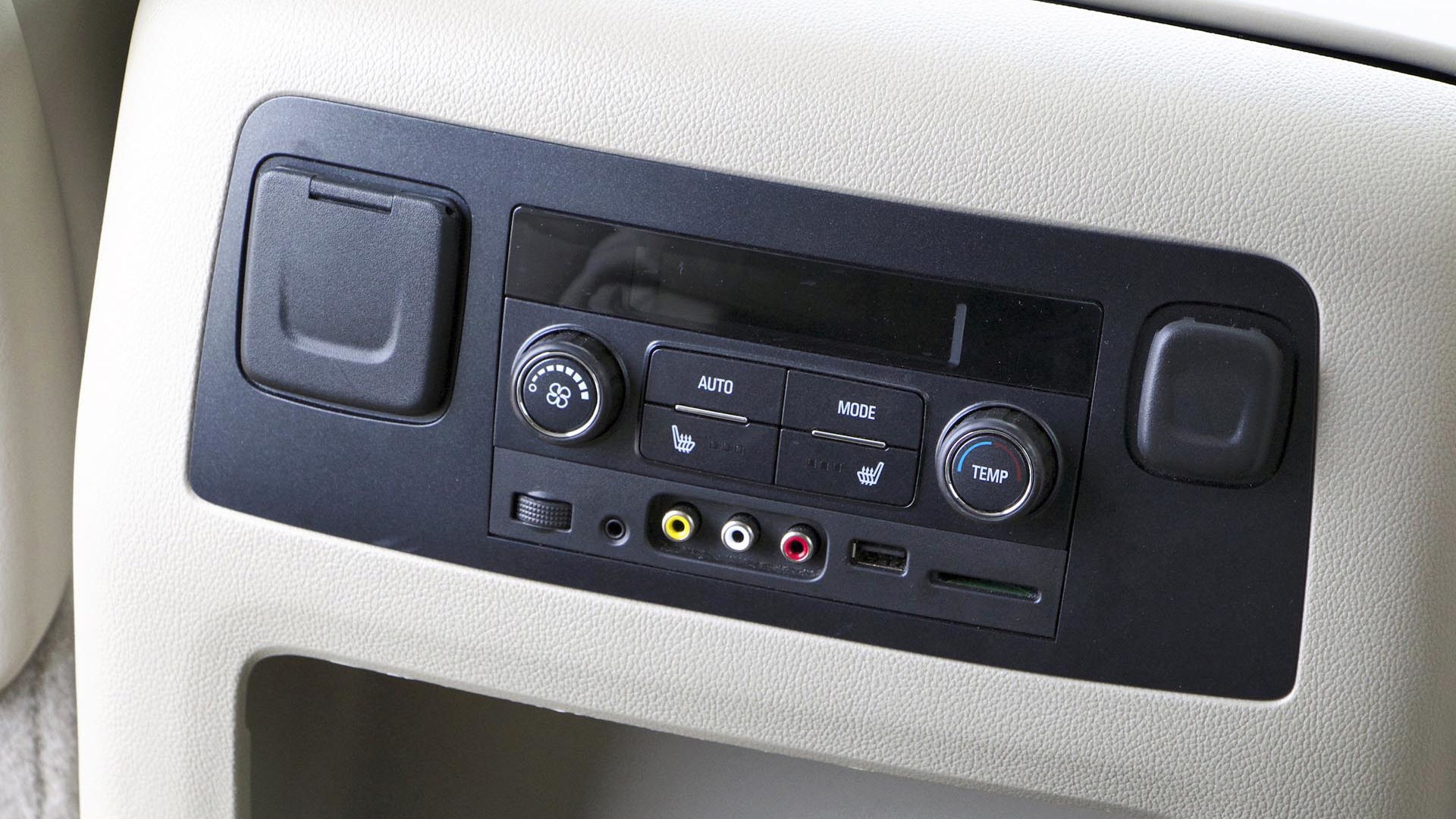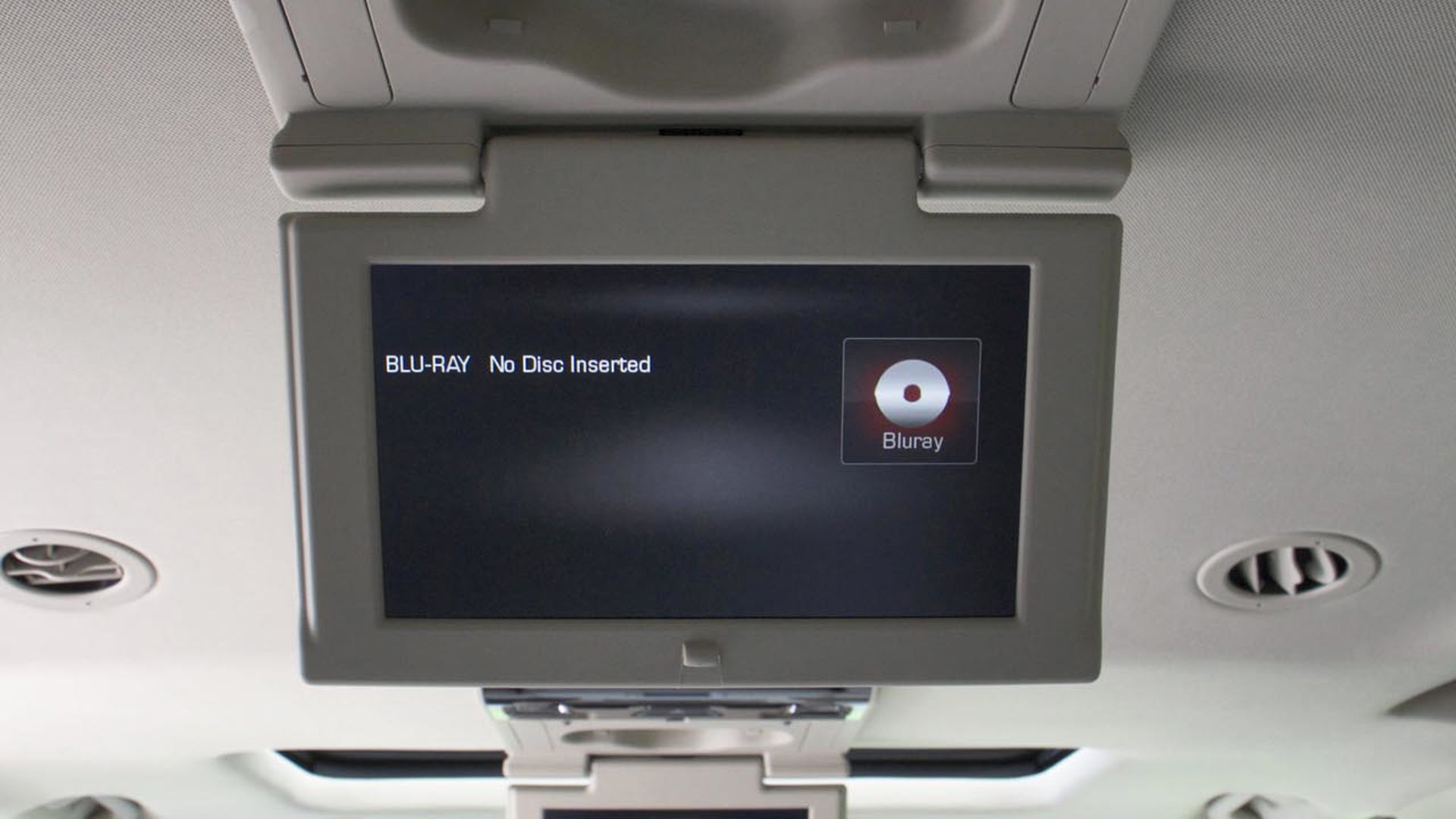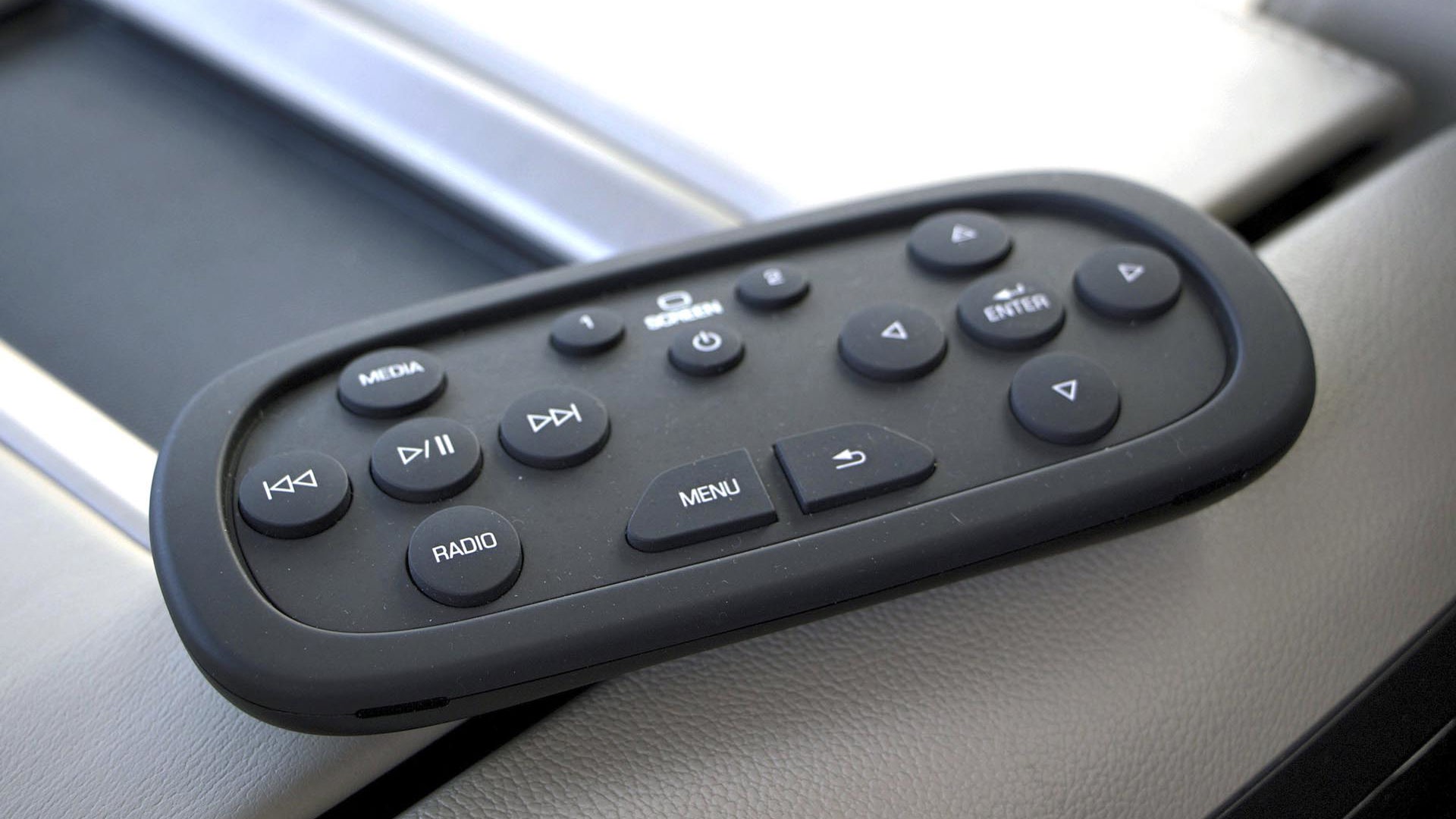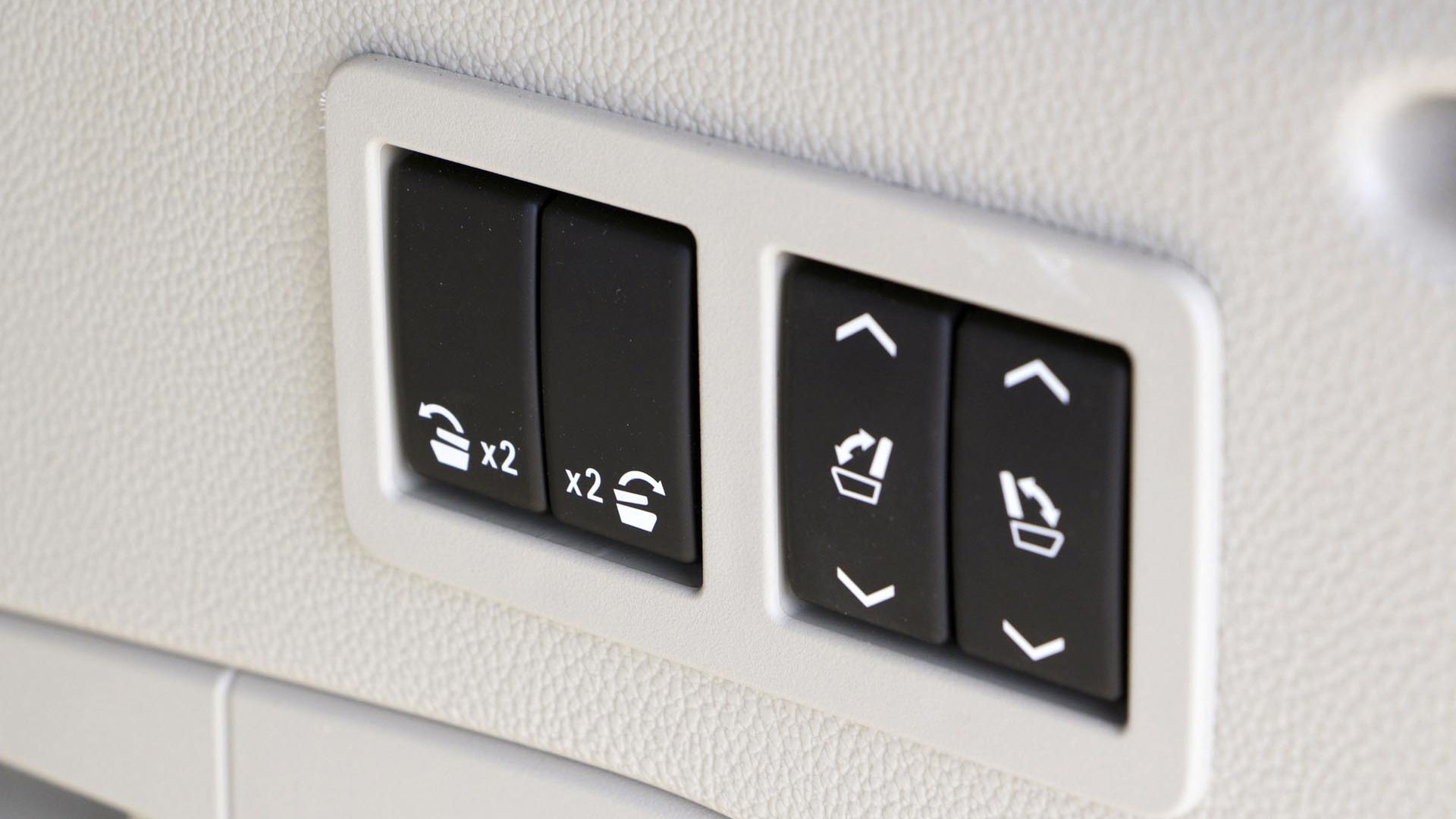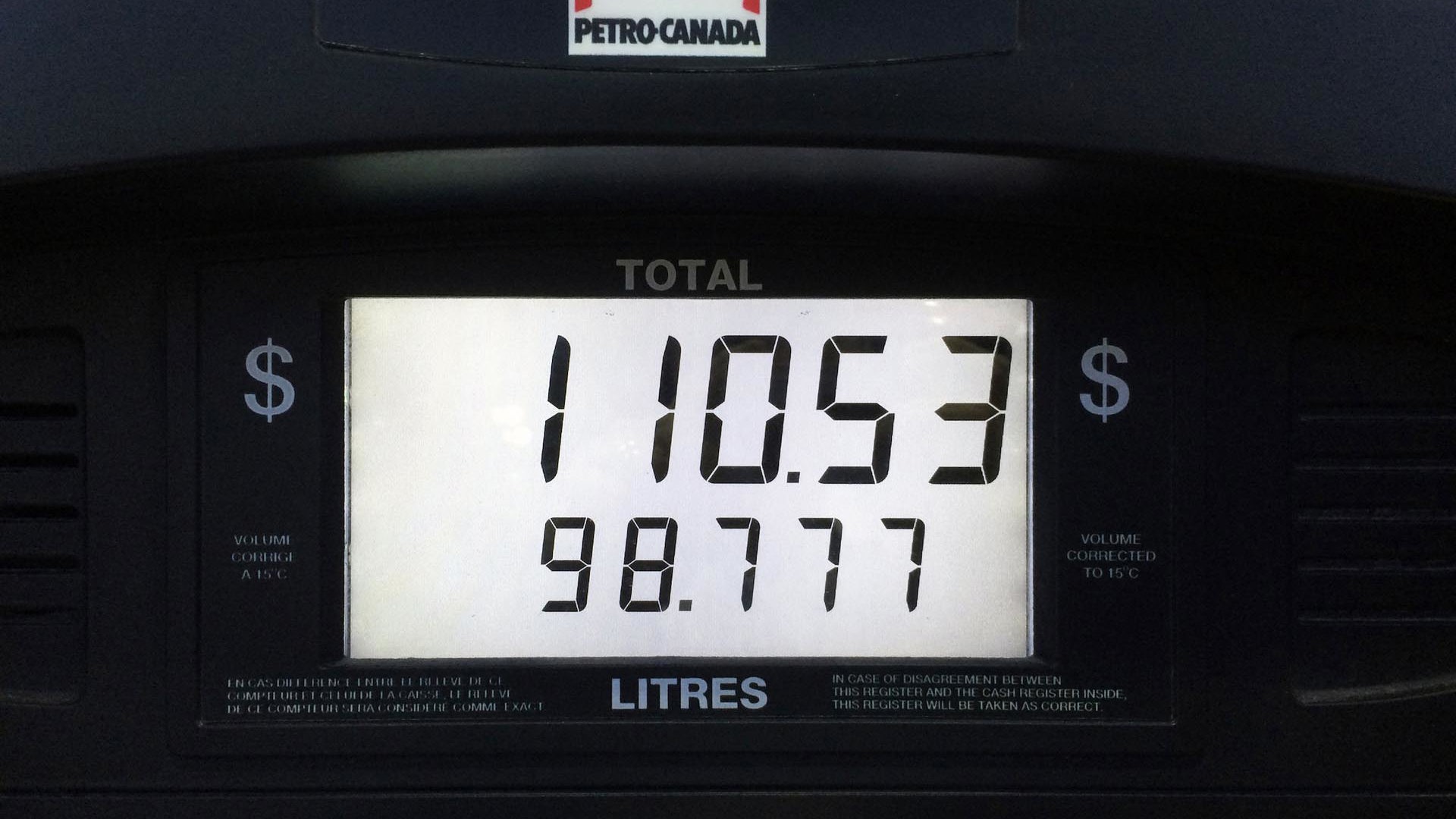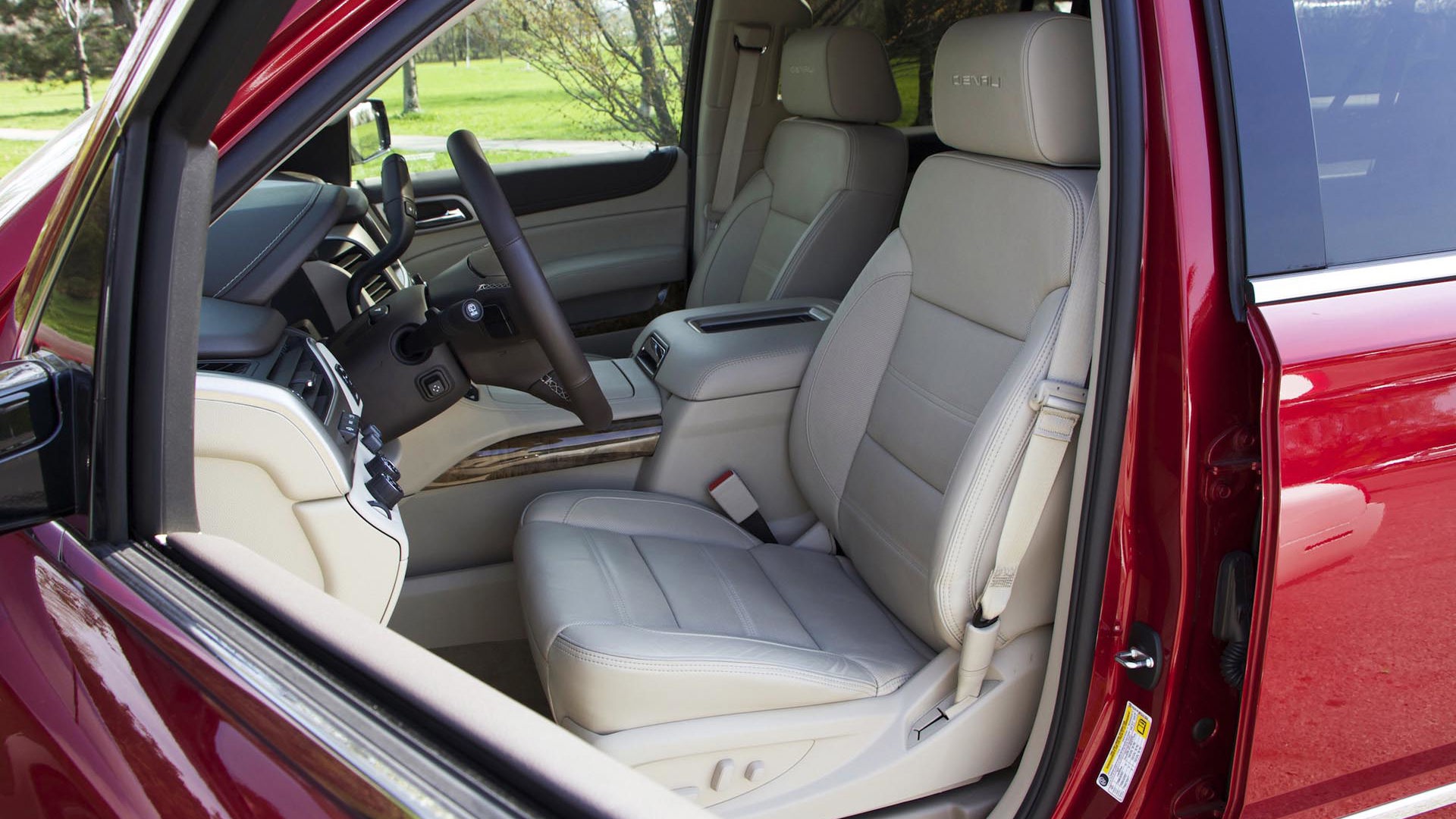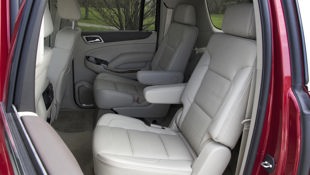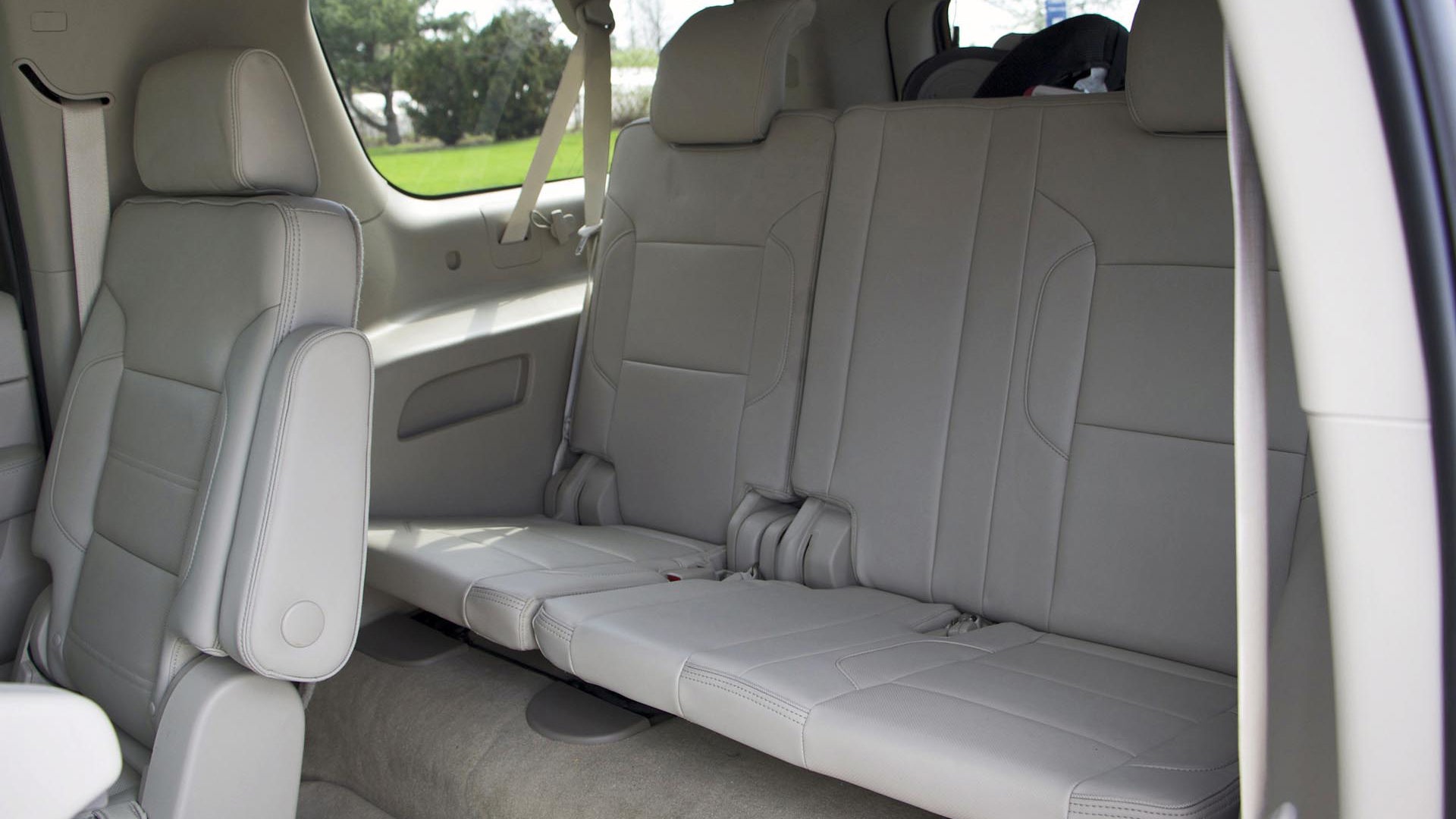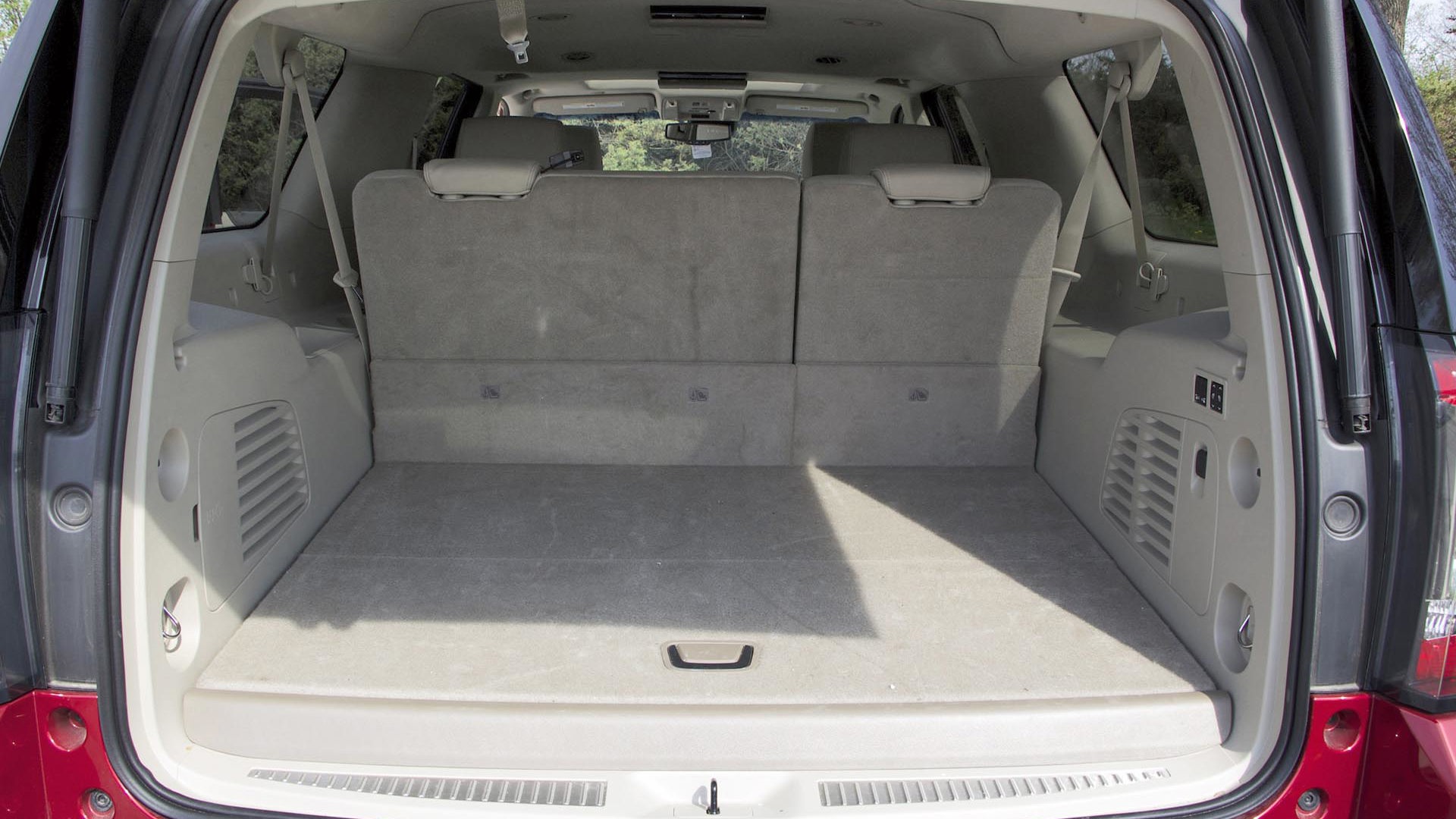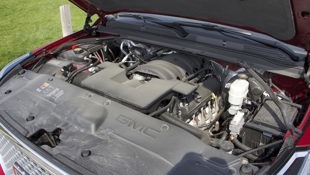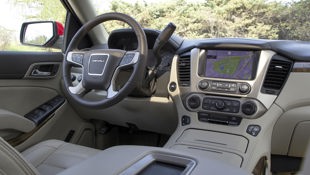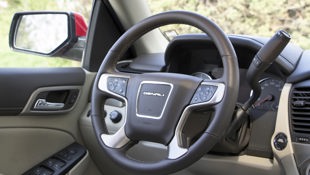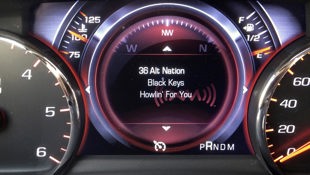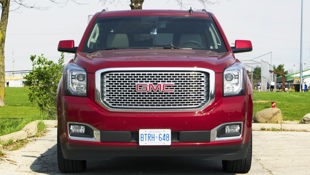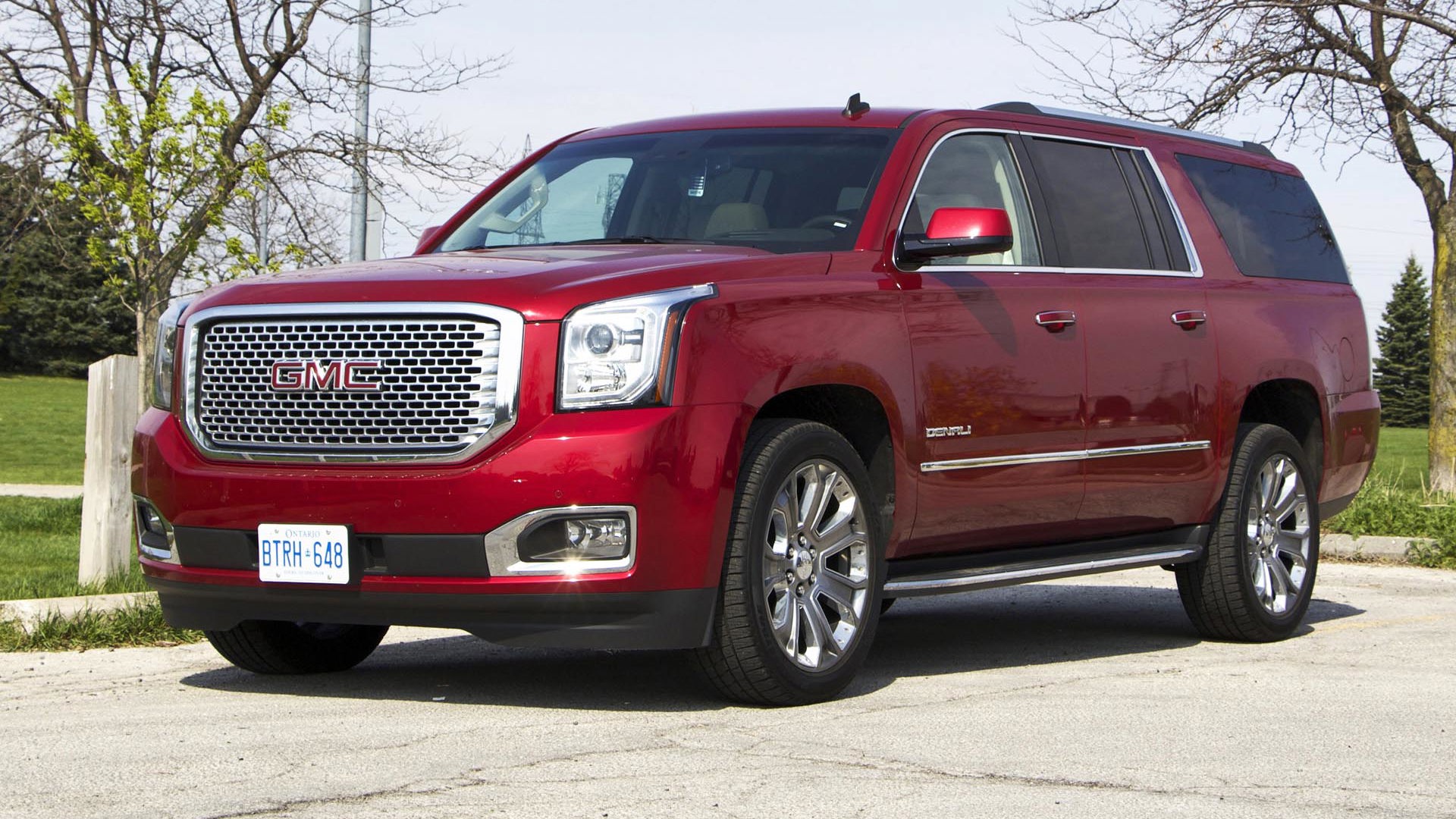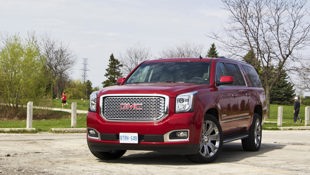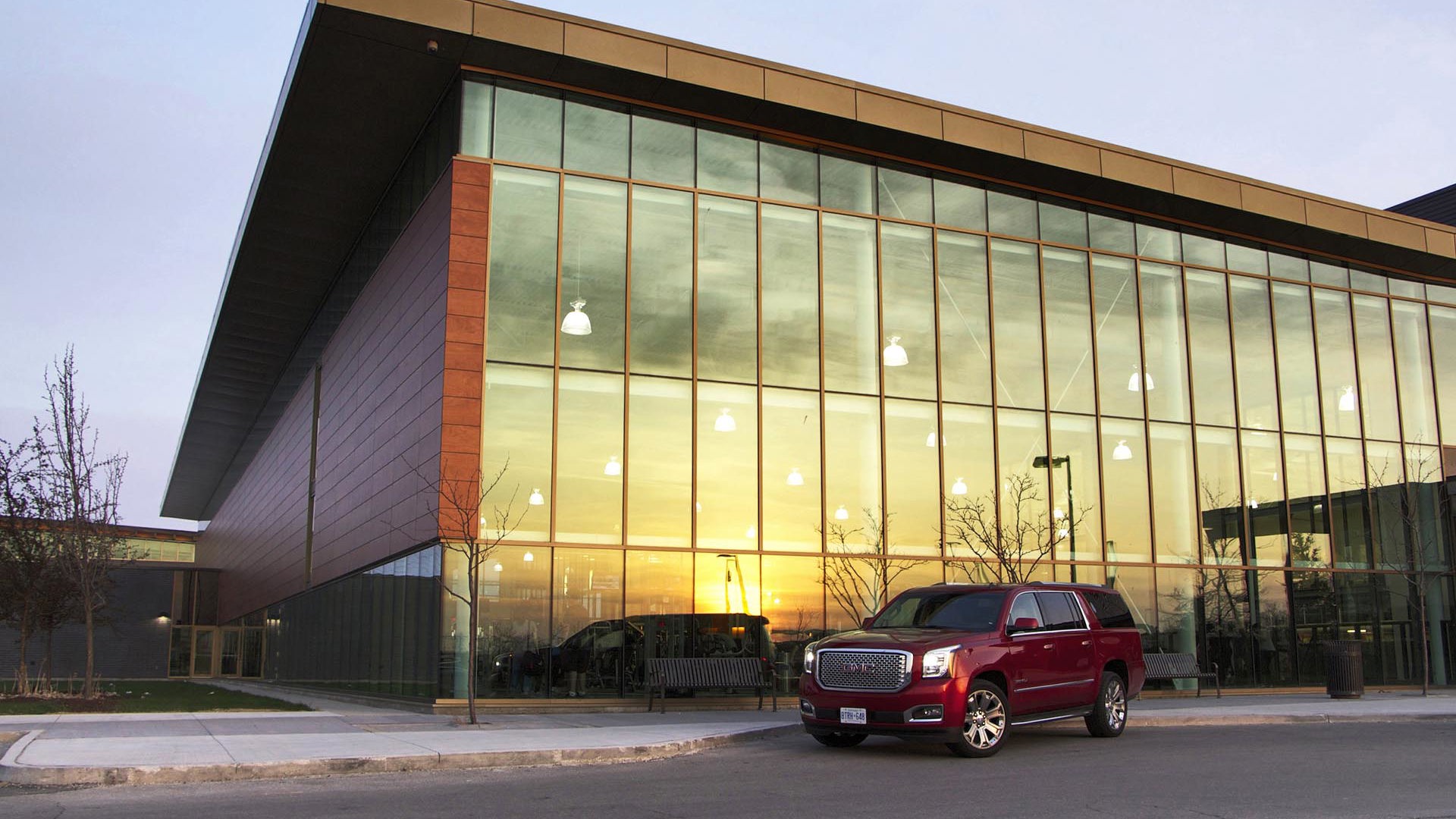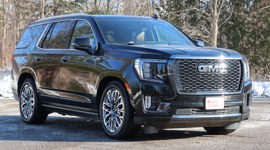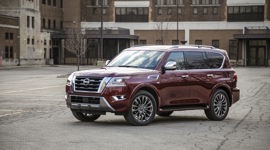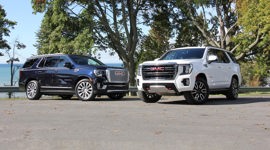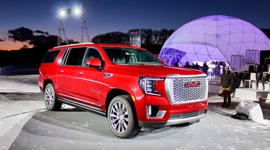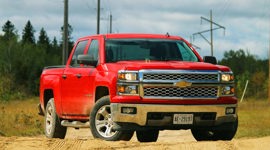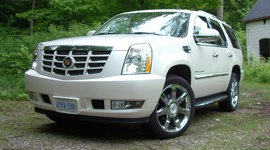 AutoTrader SCORE
AutoTrader SCORE
-
EXTERIOR STYLING8/10
-
INTERIOR8/10
-
PERFORMANCE9/10
-
COMFORT9/10
-
FUEL ECONOMY4/10
Break out your ‘big’ jokes, because this is one colossal rig. The 2015 GMC Yukon XL is surely one of the largest land vehicles still roaming mall parking lots and suburbia.
Break out your ‘big’ jokes, because this is one colossal rig.
For an average guy commuting from suburbia to the office, it is most certainly overkill, but contrary to expectations, I gained an appreciation for its utility in this XL trim. In no other vehicle short of a Mercedes-Benz Sprinter passenger van and its like will you find this much space behind a third row of seats with legitimate space for six or seven adults.
But it was the trim of this rolling beast that made the best impression, this Yukon in GMC’s well-loved Denali trim, which finally seems to be coming into its own as a luxurious take on their ‘Professional Grade’ trucks. The last time we were in a Denali, it was the Acadia crossover, and it felt extremely underwhelming for a vehicle costing over $60K. But this Denali, between its quality, size and capability, lives up to its $84,440 as-tested price.
Let’s get right inside and talk about the XL’s most important asset: cargo space. Even with all three rows in place we still have over 1,000 L of space (1,113), although the liftover height is for big and tall people and it would be quite a leap for your canine pal. Only the Lincoln Navigator L or Ford Expedition Max exceed that (and in every other configuration as well), and while a Honda Odyssey comes close with 1,089, its cargo area isn’t as long and wide, but rather sinking down below seat level in a well, while the Yukon and its ilk have a wide flat floor to spread out your gear or Costco acquisition. My demonstration was a set of 17-inch alloys with summer rubber. Note that this is with the third row up. The trunk can be set to only open to three-quarter height, when opening in an enclosed garage for example, set by a simple dial in the overhead console.
In five-seat mode, the Yukon XL rates 2,173 L, the third row power folding. The Second row can also be dropped at the touch of a button in the cargo bay, but not raised as well lie the third row. With second and third-row seats down, its 3,429 L look like an endless cavern where you and a dozen of your closest friends can cuddle up for a slumber party. However, in full cargo mode, the Honda Odyssey offers 4,205 L and the Grand Caravan 4,072 L, so these are not the out-and-out cargo champs in every category. Still, how many refrigerators are you transporting at any one time? Note that the payload for the Yukon XL is 689 kg, while the Odyssey or Grand Caravan are also in the 600 range.
Need to carry more? The Yukon XL can tow. 3,583 kg in Denali trim (slightly more in 2WD trims, but a lot less in 4x4 SLE and SLT trims) means you can tow your typical small power boats and campers with ease. Minivans can’t match that. Also standard on Denali trims are the trailer brake controller, weight-distributing hitch platform with 51-mm (2 in.) hitch receiver and 7-pin sealed wiring connector.
Another advantage of minivans is how easy they are to get into, and the Yukon proves this point: step-in is high, and despite the second-row tumble, the combined step up and narrow opening to the third row are a challenge, but the running board here is just wide enough to establish a toehold for that first step. Once ensconced in the third row, the seats are surprisingly reasonable, with decent leg and headroom, though the seat cushions are a bit skimpy and may not be comfortable for the long haul. That being said, this is a genuine six-adult vehicle (seven in lower trims without the second-row captain’s chairs). Limiting it to six passengers are the comfy bucket seats with centre armrests in the second row, which offered superb comfort, heated cushions and recline and slide adjustability.
Each rear row is treated to its own LCD screen, measuring nine inches, with wireless headphones and capable of playing Blu-Ray or DVDs with a remote control, plus HDMI, SD card, USB inputs and 110V outlet. So, entertainment options? Check. Even with twin screens, GM still squeezes in a sunroof for front passengers.
The front seats are superb for this genre, wide, but well supported and adjustable, heated and cooled with two memory settings for the multitude of seat, steering wheel and pedal adjustments. The steering wheel is big and multifunctional, covered in fine leather, though the stitching was a bit coarse for my delicate fingers. Ranch hands and hands-on contractors will undoubtedly be able to endure the suffering and hardship with a stoic forbearance and a stiff upper lip. Soccer moms will empathize with me. (I hope.)
The layout of the infotainment and centre console is effective, and although some labels for controls are rather small, the logical organization means they should quickly become second nature for things like the main menus (home screen, radio, media) and climate. Of course, climate control is automatic with separate zones for each front occupant and the rear cabin. This is also where we see the greatest leap in interior quality, with firm, well-damped switchgear set on a simple brushed metallic backing and surrounded by a stitched leather zone and then a high-quality dash top and durable, simple plastics in the nether regions. The leather on the seats is particularly lush, and the Denali logo stitched into the headrests is a nice finishing touch. It's no Range Rover, but it's a proper step up from the materials and layout in previous generations and the Yukon has proven a far more durable, reliable specimen over the years compared to that legendary nameplate.
The infotainment system itself is vibrant on its eight-inch touchscreen with extensive convenience features, including navigation, top-notch audio system (Bose-powered), Bluetooth phone and audio, satellite radio and OnStar (both with short complimentary subscriptions). The combination of touchscreen, voice command, fixed buttons and knobs for volume and tuning mean that controlling the system should be easy for a variety of different preferences. I prefer the touchscreen and found it a bit slow, but not enough to frustrate or send me to the other options, and I love the proximity sensors that bring up the most common features (Nav, phone and audio) plus functions for the current page as your hand approaches the screen.
Like the touchscreen, the gauges are bright and clear and house an eight-inch driver information screen, and this one can be display a variety of info in three different themes. Making things even easier is a head-up display (part of the optional Touring Package) putting key information right in your line of sight when looking out at the road. That Touring Package runs $5,100, and also bundles the power sunroof, dual-screen entertainment, 20-inch chrome wheels (over the standard 20-inch machine aluminum) and enhanced security package. Five grand buys a lot of iPads.
Get out on the road and the Yukon XL doesn’t disappoint. The 6.2L V8 exclusive to the Denali trim in the Yukon line comes to life at the press of the push-button start or remote start for cold winter mornings. Peak power is 420 hp at 5,600 rpm and torque 460 lb-ft at 4,100 rpm, so despite the hefty 2,713 kg, the Denali rumbles up to speed with authority. It’s not quick to overcome inertia, but gets moving at just the right pace, and if you really plant your foot, it bellows like a raging elephant and charges with an almost scary urgency. I only tried that a couple times, and the brakes were equally up to the task of controlling that mass and offering the confidence that it could handle that 3,500-kilo trailer. While this test did not involve towing, my experience in the Yukon’s pickup-sibling Sierra leads me to believe this will be a highly satisfactory tow vehicle.
Under more normal operation, the 6.2L is a very quiet burble, and often runs on four cylinders alone when cruising at steady highway speeds or coasting around. This Active Fuel Management (with an icon in the gauges that indicates how many cylinders operating), plus direct injection and variable valve timing help the big lumbering luxury ute of the apocalypse achieve a 14.0 L/100 km rating for highway driving, a quite frightening 18.8 in city driving, and a combined rating of 16.6. Your trusty scribe entirely missed recording the fuel consumption or distance travelled, but did document the 110.53 cents and 98.777 L, which is about double what I normally pay in a more average vehicle in my routine of driving somewhere between 500-600 km. So, yeah, it's certainly better than previous generations, but don't get too caught up in the improvements that you forget about the overall cost of running such a large vehicle.
Speaking of running, that is a thing the Yukon Denali does with ease. On the highway it is an absolute cruising machine, whisper quiet and tracking steady, though it does feel a bit wide in its lane and so is always close to triggering the lane departure alerts. The massive size and weight give it a lot of control over the ride, and it is subsequently very well damped.
Tested in ideal weather, the selectable four-wheel drive with two-speed transfer case with a low-range for crawling was just another option on the feature sheet. The Yukon’s body-on-frame construction, however, promises thoroughly rugged capability if you’re the type to take something this shiny off the beaten path.
Our Denali was outfitted with upgraded 22-inch wheels ($545 option over the standard 20-inch wheels) that aid in giving the Yukon a planted and controlled demeanour in turns and corners without too harsh a result on broken pavement and rough roads. They also look sharp, with subtly contrasting bolted chrome inserts against satiny recessed spokes that look industrial yet classy. The $515 Crystal Red Tintcoat paintjob was also a winner, though I'd find it hard to pick a big SUV in anything but G-Man black.
Aside from the lane departure warning system mentioned earlier, the Yukon XL Denali also comes with some crucial driving aids for a vehicle this large like blind spot alert (with seat buzz warning), forward collision alert, and oh-so-appreciated parking aids: back-up camera, rear cross-traffic alert and front and rear parking sensors with audible and visual warnings – I would not have made it through the week without them.
It’s a big price for this much vehicle, starting at $76,530 with a $1,650 Destination fee for the Yukon XL Denali, but I am convinced that in this class, it makes more sense to go whole hog for that excellent dose of cargo-carrying practicality with six or seven occupants. This is a vehicle with a lot of capability, but that capability, a history of reliability in this segment and the quality infused into the Denali justify a correspondingly high price. It’s truly worth it if your needs stretch this far and your budget permits. In my mind the Denali finds that ideal mix of honest utility, desirable performance, flashy trimmings and solid quality that make this stand out as the best of the large SUVs, both in the GM stable and among the luxury pickup-based utilities.
| Warranty: 3 years/60,000 km; 5 years/160,000 km powertrain; 6 years/160,000 km corrosion perforation; 5 years/160,000 km roadside assistance Competitors: |
| Model Tested | 2015 GMC Yukon XL Denali 4WD |
|---|---|
| Base Price | $76,530 |
| A/C Tax | $100 |
| Destination Fee | $1,650 |
| Price as Tested | $84,440 |
|
Optional Equipment
Touring Package $5,100 – power sunroof, rear BluRay/DVD entertainment package w/ two overhead 9" LCD screens and wireless headphones; 22" aluminum wheels with painted inserts $545; Crystal Red tintcoat $515.
|
|
